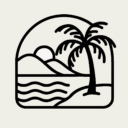7 Day Itinerary
Puerto Rico is bigger and has more to do than many realize. Seven days allows you to see much of the island without rushing from place to place. If you want to see and do a lot on your trip, this is the itinerary for you!
Day 1
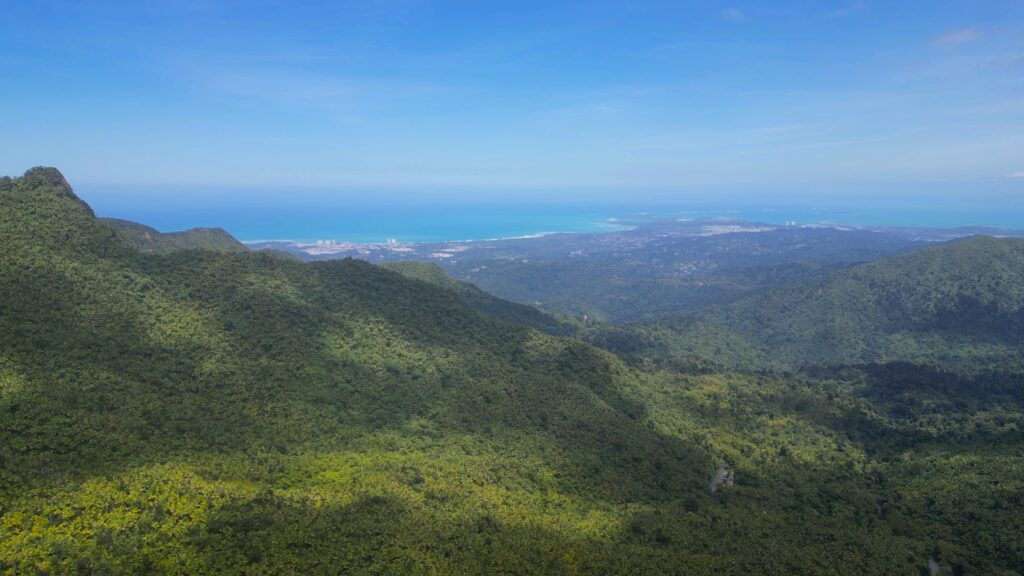
On your first day in Puerto Rico you’ll arrive in San Juan and rent a car. From there, you’ll make the 1 hour drive to El Yunque National Forest. It’s one of the most popular places to visit in Puerto Rico for a reason.
On the way, get breakfast at Panadería España – an amazing bakery with so many options. Like at any bakery, you can’t go wrong with their egg, bacon, and cheese sandwich.
Arrive at the national forest early. It opens at 8:00am and they only allow 200 cars in at a time. The gates close at 5:00pm.
The following is a list of my favorite spots in the order I typically visit them, for a more in depth guide, check out my El Yunque Itinerary.
La Coca Falls
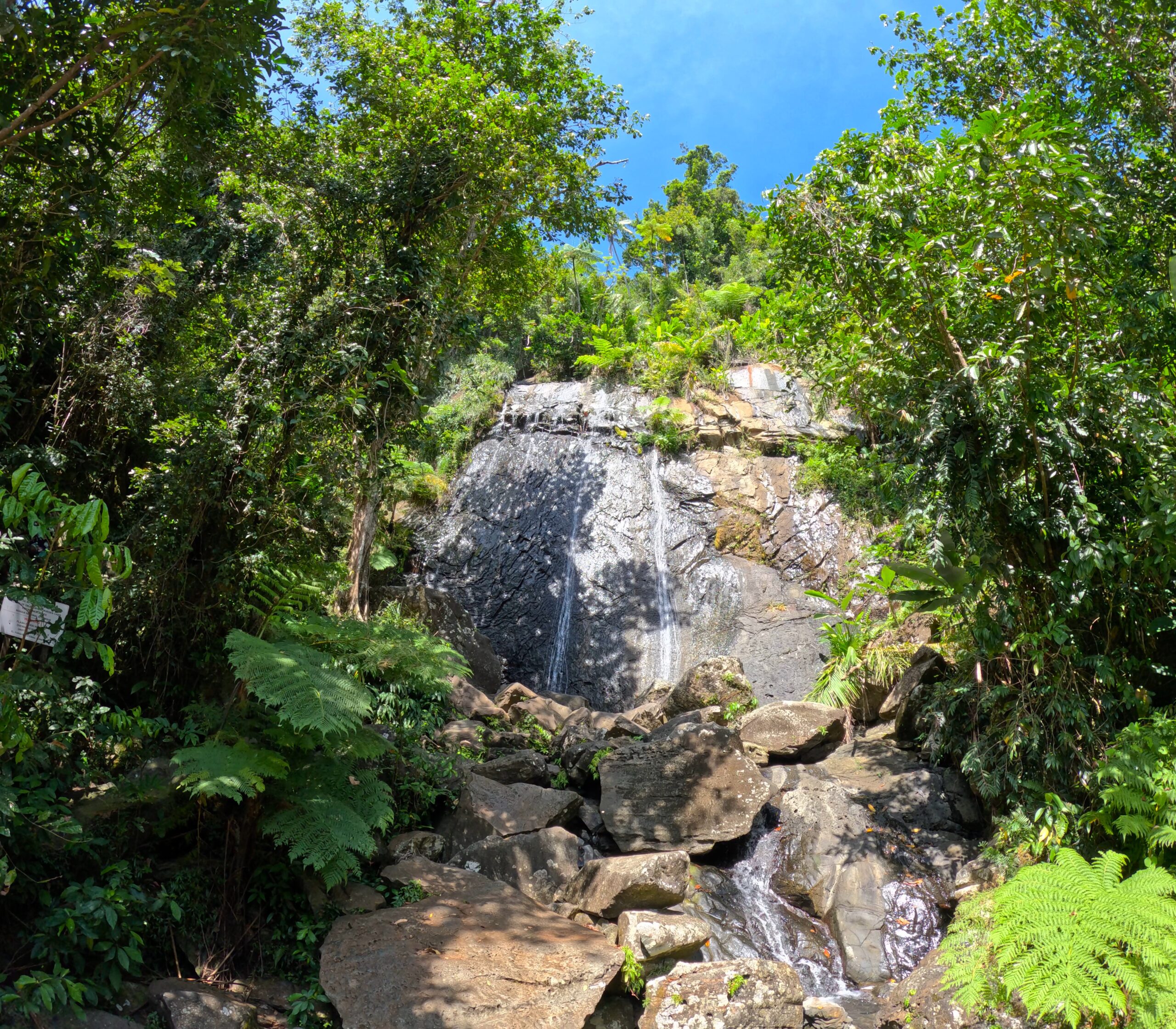
Yokahu Tower
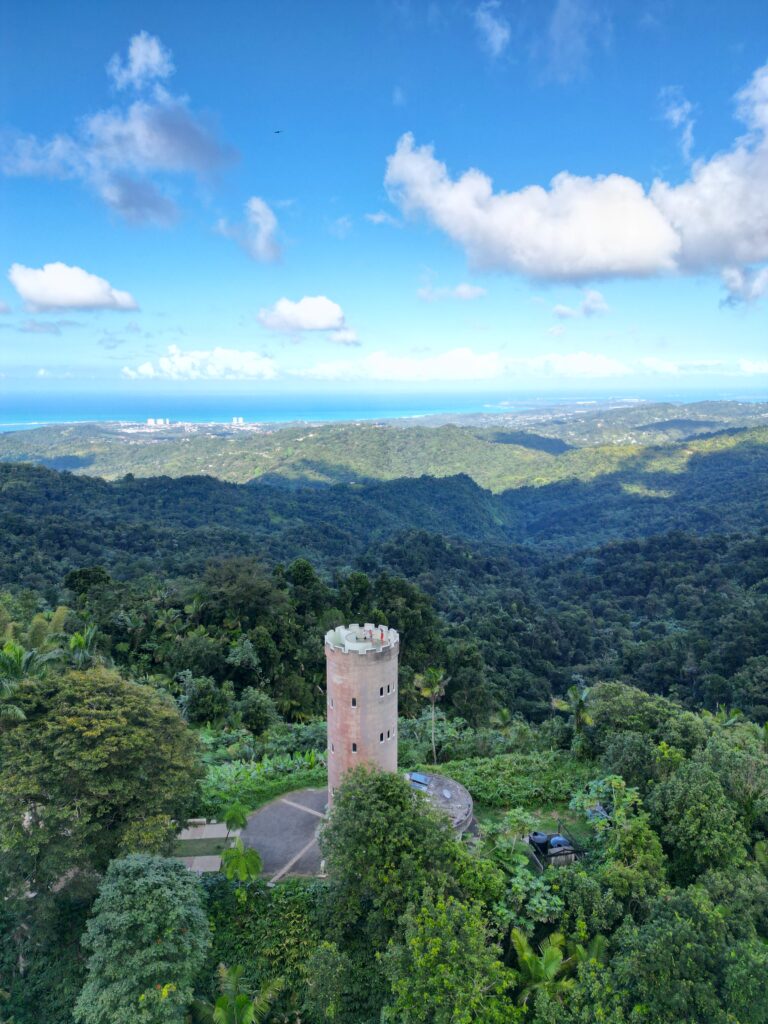
Juan Diego Falls
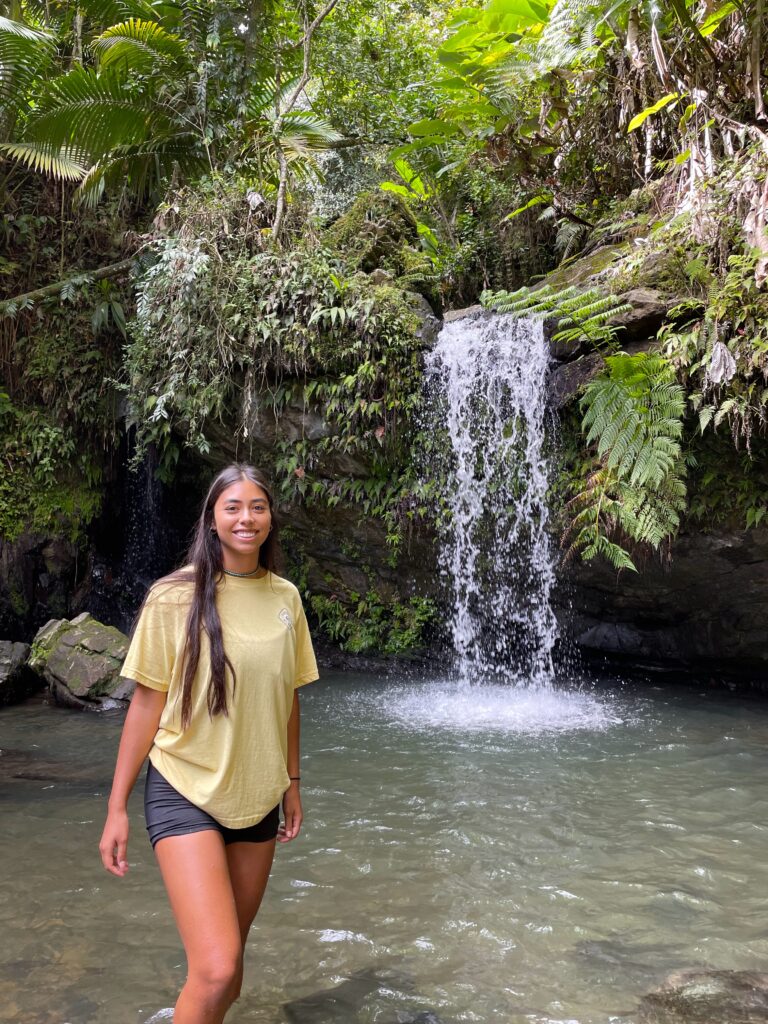
Britton Tower
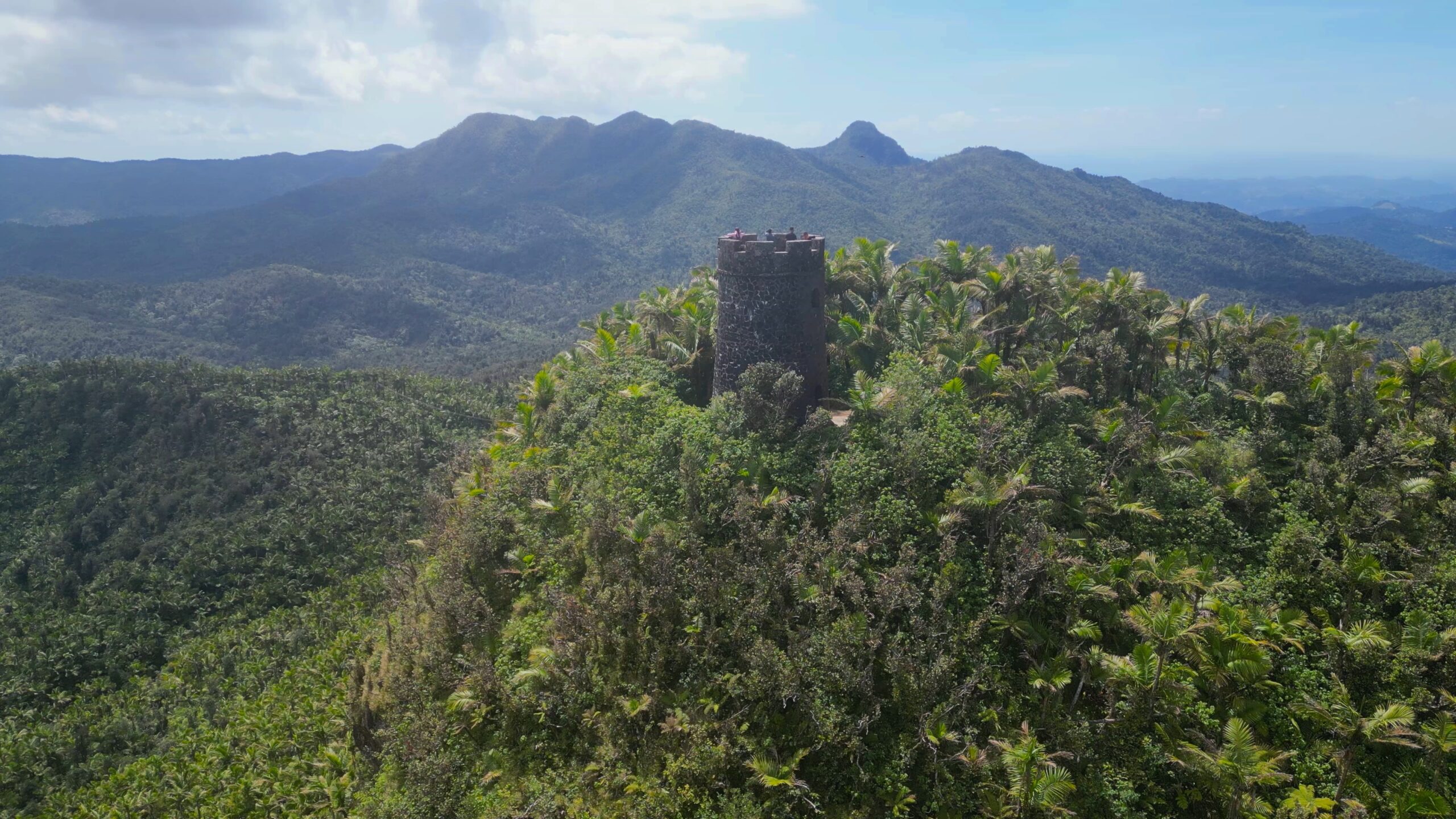
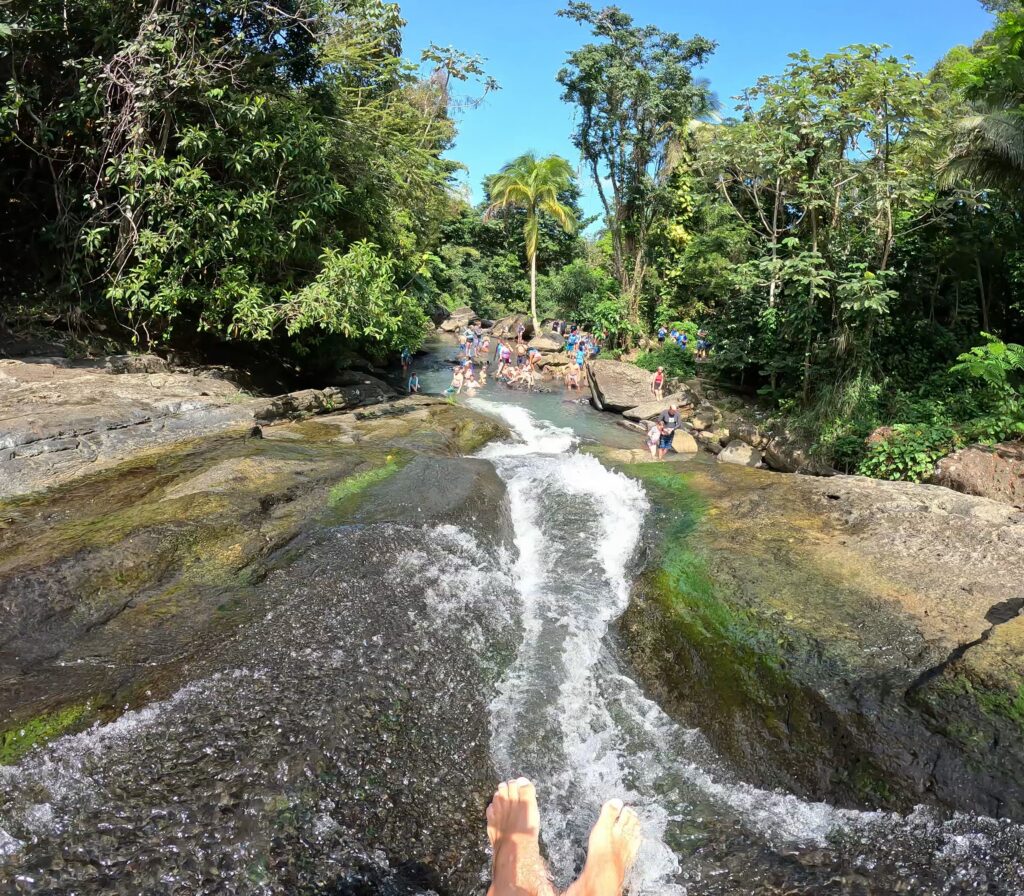
If you follow my itinerary and arrive close to 8:00am, you’ll finish at around 12:30pm. As you leave El Yunque, a great stop is the natural water slide and swimming hole called Las Paylas. It costs $5 to park in front of someones property and $1 to walk through their property. The walk can be a little muddy and slippery. Walk up the rock on the right side of the slide. Careful, it is very slippery! When sliding down, sit up and run your hands over the rock as you go down for balance – like sitting in a chair with arm rests. After the slide, walk down the river a ways to find a large swimming hole where you can relax in the water.
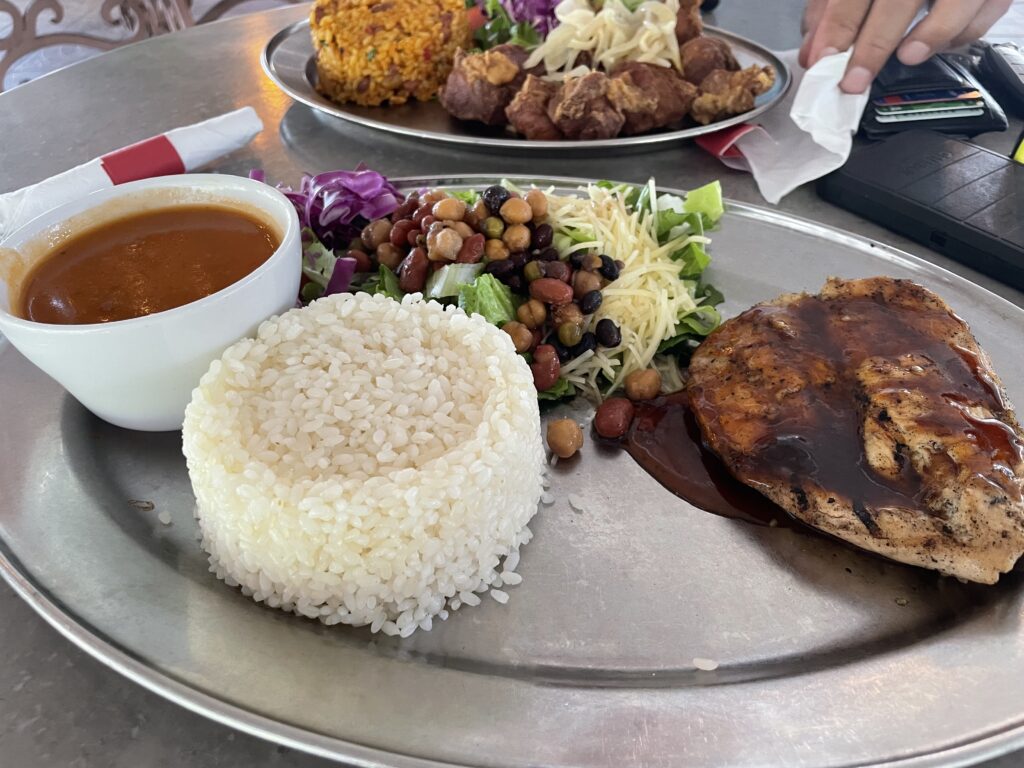
It’s lunch time! Drive from Las Paylas to the Luquillo Kiosks – a long line of kiosks which are mostly restaurants or bars. My favorite place to eat is at La Parilla but I highly recommend walking from kiosk to kiosk sampling the different food you see on display if you want to try different traditional foods. Most of those kiosks are on the east end, opposite of La Parilla restaurant.
Luquillo Beach

The kiosks are located right on the beautiful Luquillo Beach. Walk to the beach and find some shade to set up under. The water is calm and shallow. If you walk to the far east side of the beach, near the paid parking lot and where the beach rounds a corner, you’ll have an awesome view of El Yunque. The water is calm enough for paddle boarding, and renting jet skis is popular here.
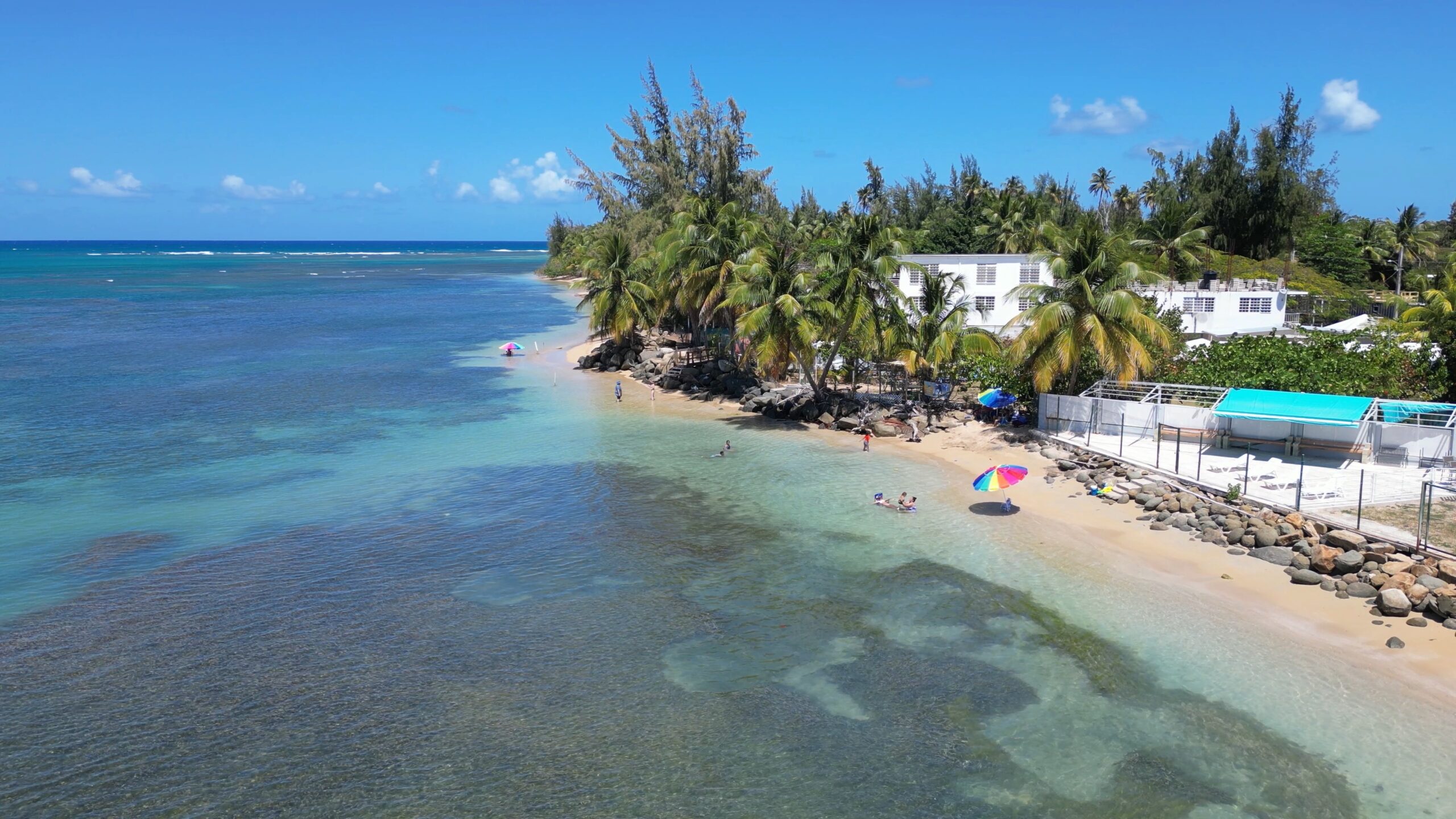
A good alternative to Luquillo Beach is the nearby Las Picuas Peninsula Beach. Beaches surround a peninsula lined with residential properties. The sandy bottom turns to sea grass after a few feet in most areas which leaves just enough room to lay in the shallow water. There are signs that say “ruta” that mark paths to the beach between the houses. The spot pictured has the most space but is also the most popular. There are umbrella holders set out in the shallows, all you need to do is pop an umbrella in, set a beach chair in the shade, and relax. During high tide there is very little sand. There are coral reefs past the sea grass you can swim out to for some snorkeling, but there isn’t a whole lot to see. The reefs are almost completely dead.
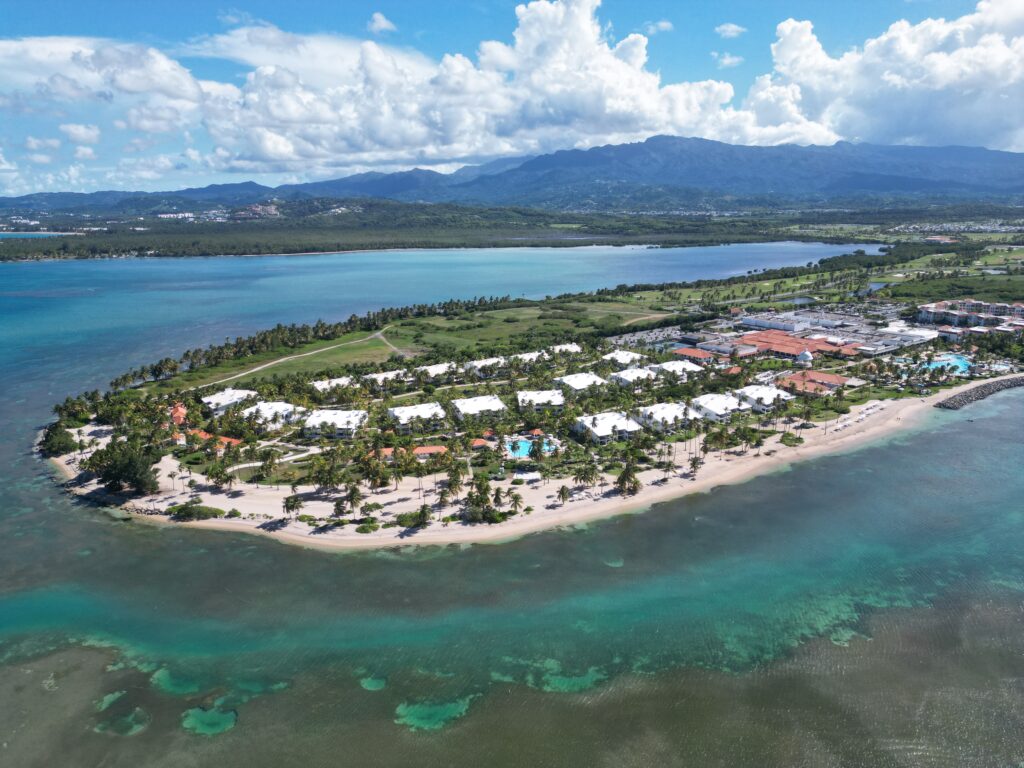
When the sun sets and you dry off, head to a hotel or Airbnb in the area. Getting a place to stay in Luquillo, Fajardo, or Ceiba will make for a shorter drive in the morning. There are several fancy resorts nearby like the Hyatt Regency, which owns it’s own mini-Florida shaped peninsula. For those hoping to spend less than $800 a night, check Airbnb like I do. For dinner, consider trying popular Puerto rican fast food like El Mesón – a fancy subway, or Pollo Tropical, which offers cheap Puerto Rican food. If that’s not your style, Cinco Nudos is a restaurant in the Fajardo Marina with some good seafood options and has a nice ambiance.
Day 2
On day two you’ll be heading to the beautiful island of Vieques. For more in-depth information, check out my Vieques Travel Itinerary.
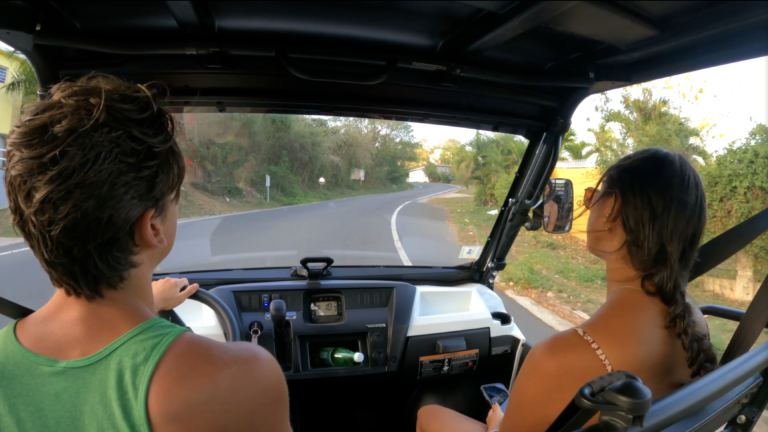
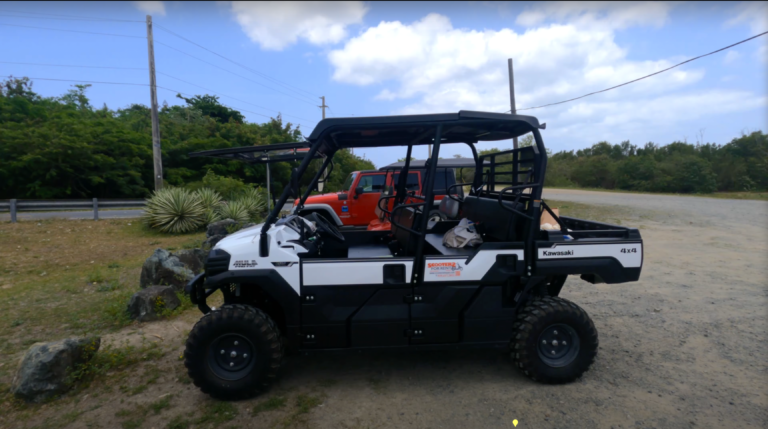
In the morning, drive to the Ceiba Ferry Terminal. If you decided to stay the night back in San Juan, the drive will take about an hour. In advance, up to a month prior, you need to buy round trip ferry tickets. If you are not able to buy the tickets in advance, you’ll need to check online to see that there are enough ferry tickets available at the ticket booth and buy them the morning of, or better yet, the night before if there are not many tickets left. I find that tickets to Vieques are easier to get than to Culebra. Buy a “passenger only” passage to arrive quicker. The “pax & cargo” passage is a bigger vessel that travels at half the speed. Parking the rental car in the lot overnight will run you $30.00. You’ll need a place to stay on Vieques. There are a lot of Airbnbs to choose from on the north or south side of the island. I have stayed here twice and can recommend it as comfortable and cheap at $157 for 4 people at the time of my last visit – April 2023 (It will be cheaper in the off-season). You’ll also need a way to get around the island. I always rent from Scooters for Rent by Vieques Inc.. When you arrive in Vieques, walk 10-15min from the ferry terminal to their building. I recommend getting a UTV over a golf cart . The UTV is more expensive, but can go much faster (if it’s a 4 or 6 seater, the 2 seater is as slow as the golf cart). That’s important for getting to all the places you want to see. The golf carts move painfully slow at 20-25 mph top speed. If you are hungry, there is a good panadería right next to the rental shop – Panadería La Viequense.
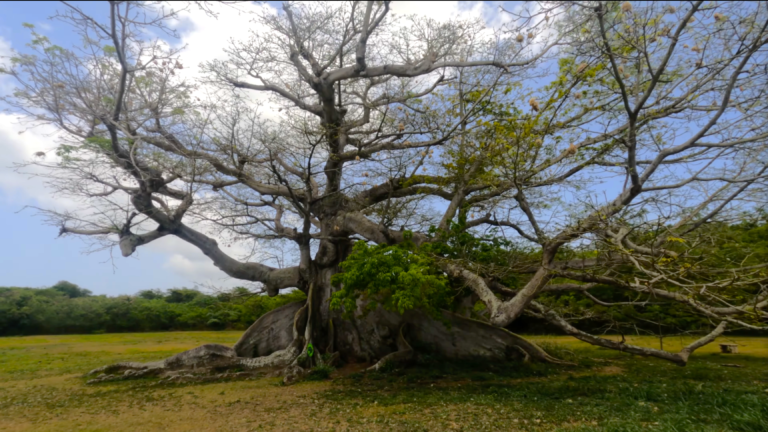
Drive from the rental shop to Parque de la Ceiba de Vieques Reserva Natural to walk around a 400 year old Ceiba tree. There are some plaques with interesting information nearby and small stone benches set along the perimeter to appreciate a living thing four times older than you or I will ever be.
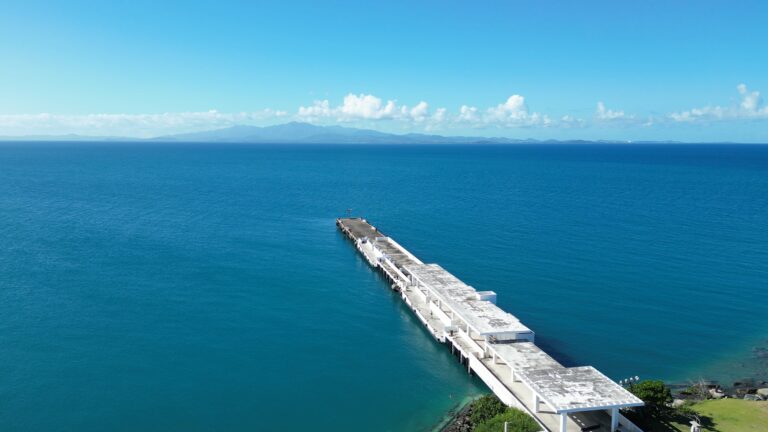
Continue west to the nearby Mosquito Pier for some snorkeling. I have seen a variety of tropical fish, turtles, pufferfish, barracuda, tarpon, and on my most recent visit, a majestic spotted eagle ray. This is a popular scuba diving location for the marine wildlife that can be seen swimming between the pilings (yeah, apparently that’s the proper technical term for the underwater columns that hold up the dock). Visibility is often good, but I have never seen it crystal clear here so I imagine this varies depending on conditions. To enter into the water, you can find a good spot in the rocks that line the pier to scramble down, and then swim towards the dock. You’ll likely see star fish and Flamingo Tongue snails eating sea fans as you approach.
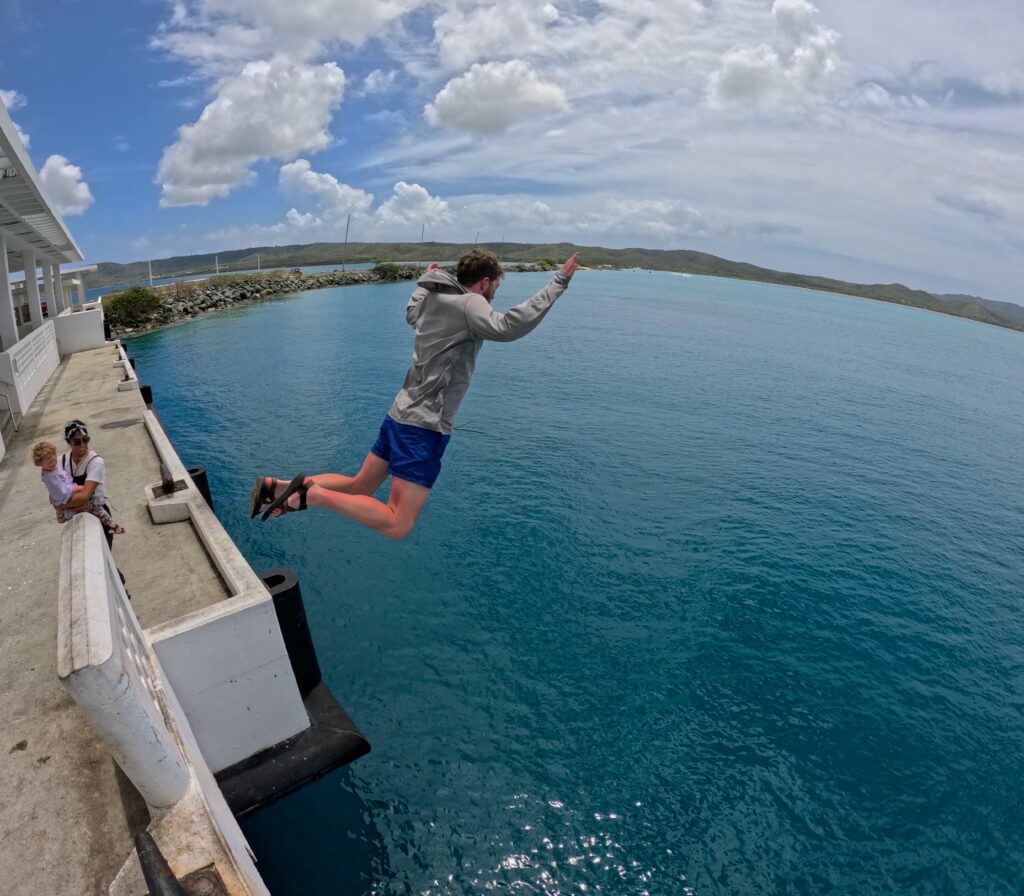
Alternatively you can walk from where you parked on the side of the road over to the dock and hop off (around a 10ft jump) and start snorkeling. The depth is somewhere around 50ft for the length of the dock, if that freaks you out, you don’t have to swim too far, just stay close to the pier and you may still see a lot. If you brave it, I think you’ll find it’s worth the swim.
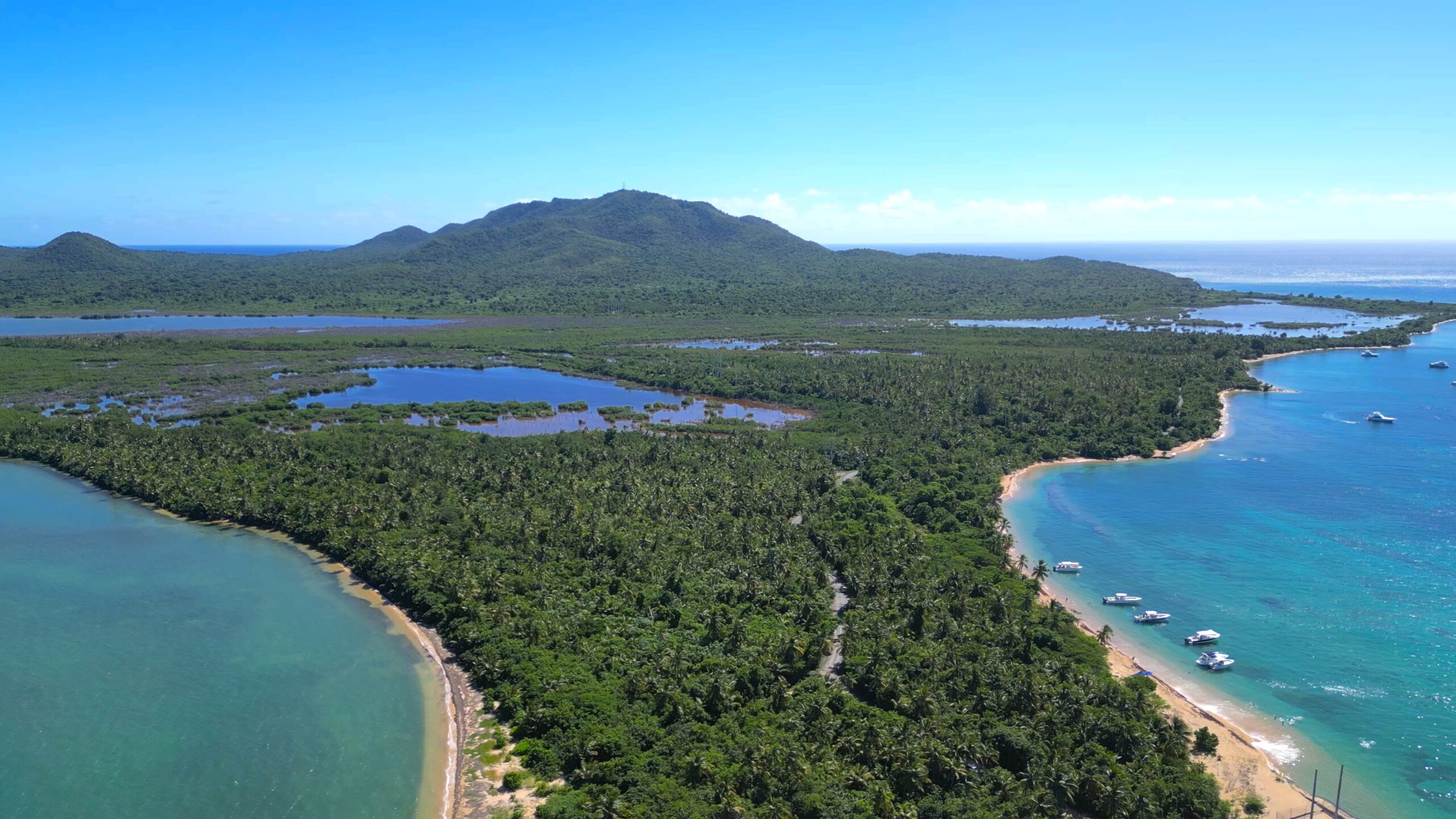
On the Northwest tip of Vieques island is a beautiful beach with leaning palm trees and boats anchored in the sand. It’s a long drive to get here, but totally worth it. The last part of the drive is on a rough dirt road where unmarked speed bumps have been built, I recommend a UTV for the drive. There are two places to park, the first spot is better. There are conch shells washed up on the shore and many more in the shallows. I hear there is a great reef to explore here close to shore. The sand is partially composed of smoothed granite pebbles mottled with black stone and quartz. Floating in the clear water affords a great view of the main island.
Drive 30 min back to the main city on Vieques: Isabel II. Grab lunch at Casa Nativo. The best thing we tried here was an appetizer of piononos and a side of mashed yuca. In general, the food is good and the restaurant has air conditioning. It’s located within walking distance of the ferry. They were cool about us coming in with our own drinks since we had just picked up sodas from the gas station. The downside is that there were a lot of mosquitos in the restaurant that attacked us incessantly. If the menu doesn’t appeal to you, we sometimes buy stuff for sandwiches to eat on the beach at the nearby supermarket.
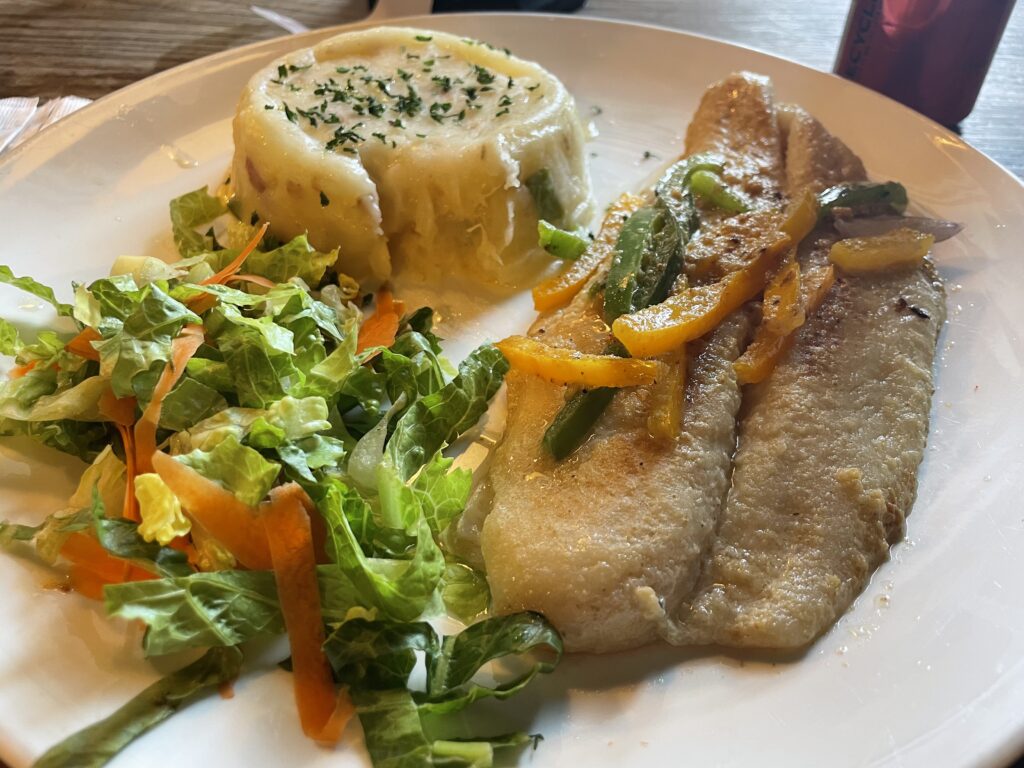
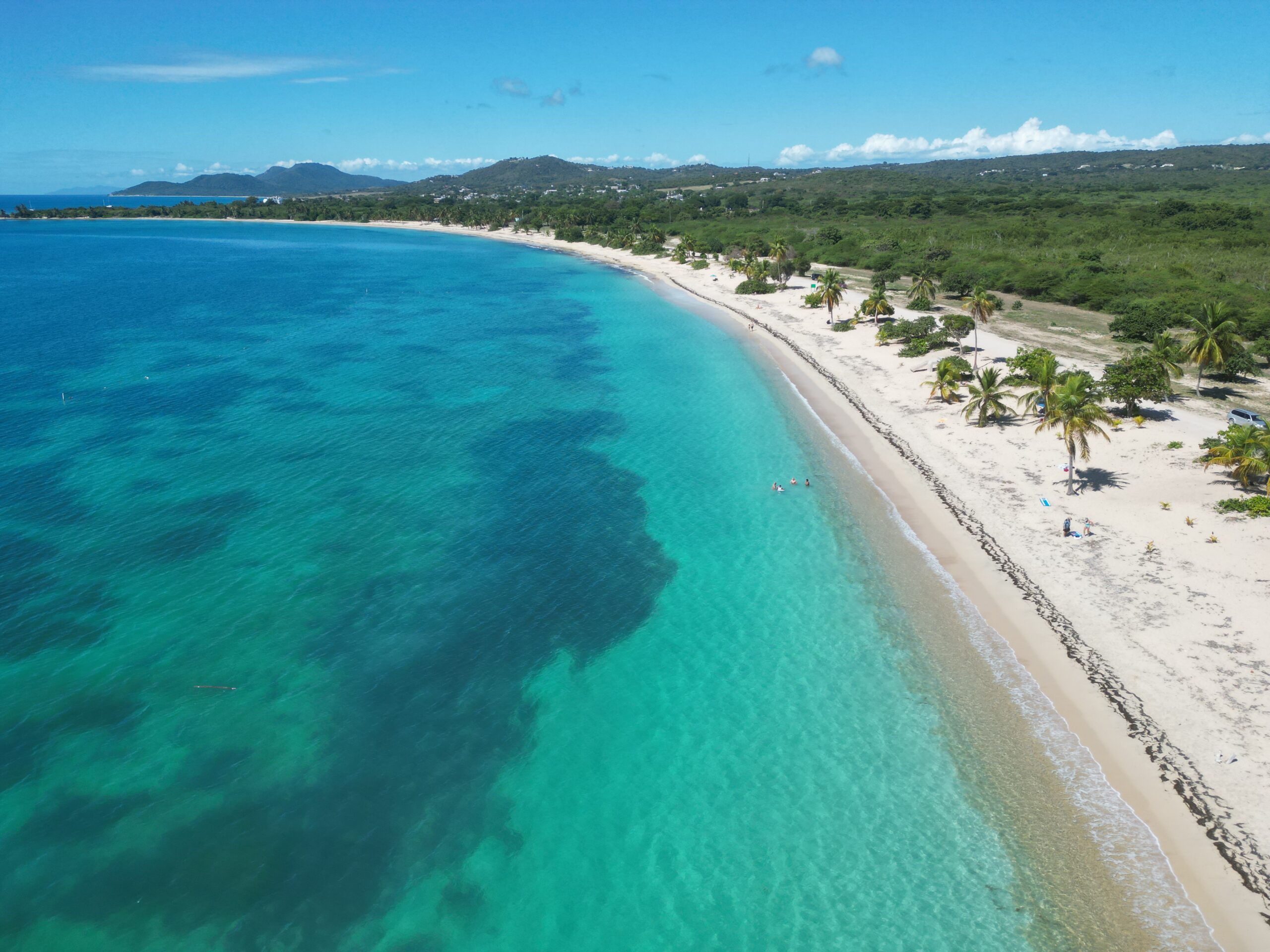
A 1 mile long, crescent-shaped beach with palm trees lining one side and the blue Caribbean water lapping on the other. My friend Sam said upon seeing it, “This is straight out of a commercial.” Drive down the sandy road and pick a palm tree to lie under. This is the perfect place to spend the day on Vieques. I really don’t have a photo that does it justice. It’s more accessible than the other popular beaches on the island as it’s the closest.
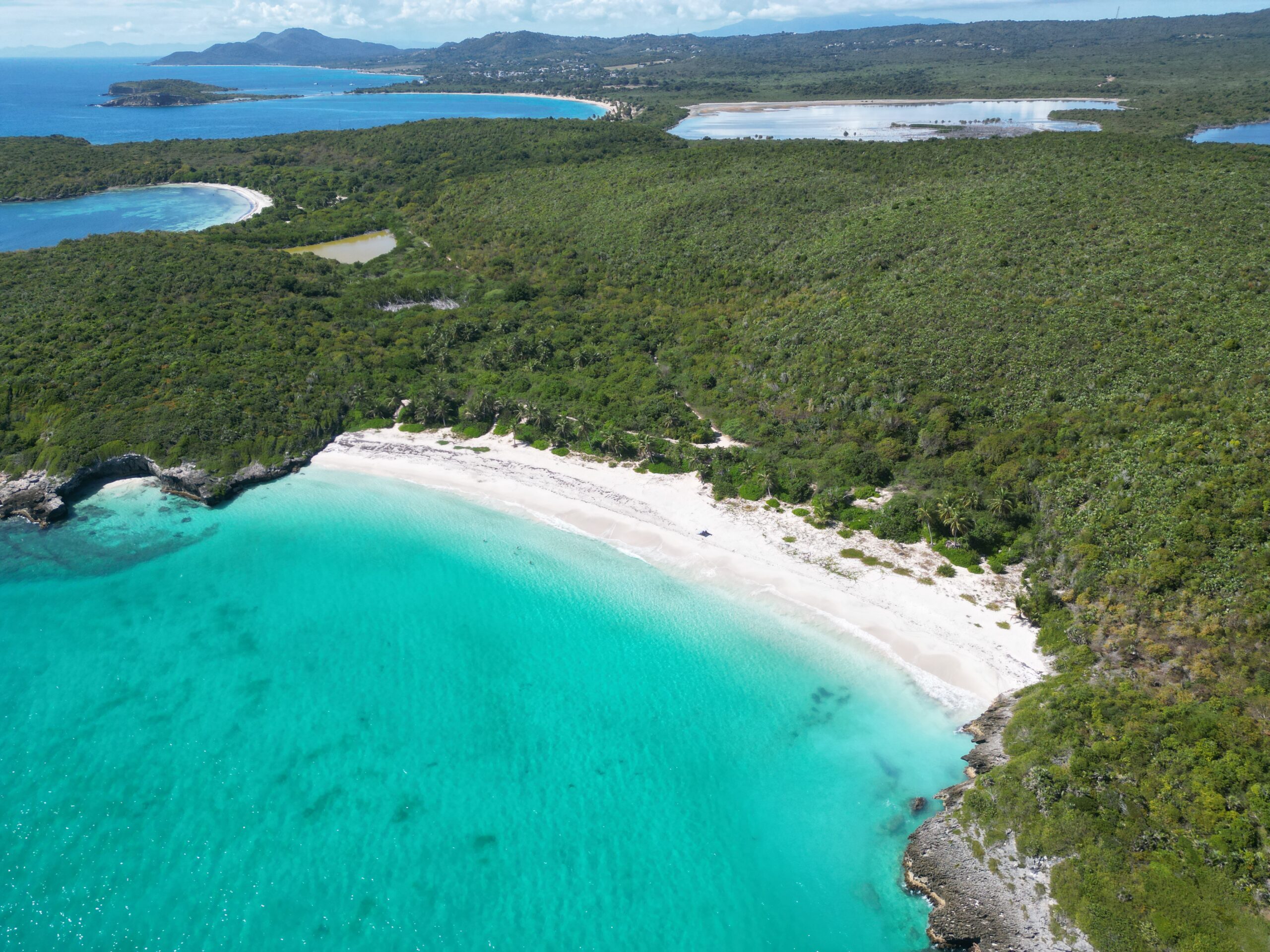
This beach is tucked away down a long and rough dirt road past Sun Bay Beach. Getting there isn’t easy, a vehicle with some clearance is required. The drive is 100% worth it! The sand is white and the water is turquoise blue and crystal clear. We went two days in a row and found the beach mostly empty, probably due to its remote location.
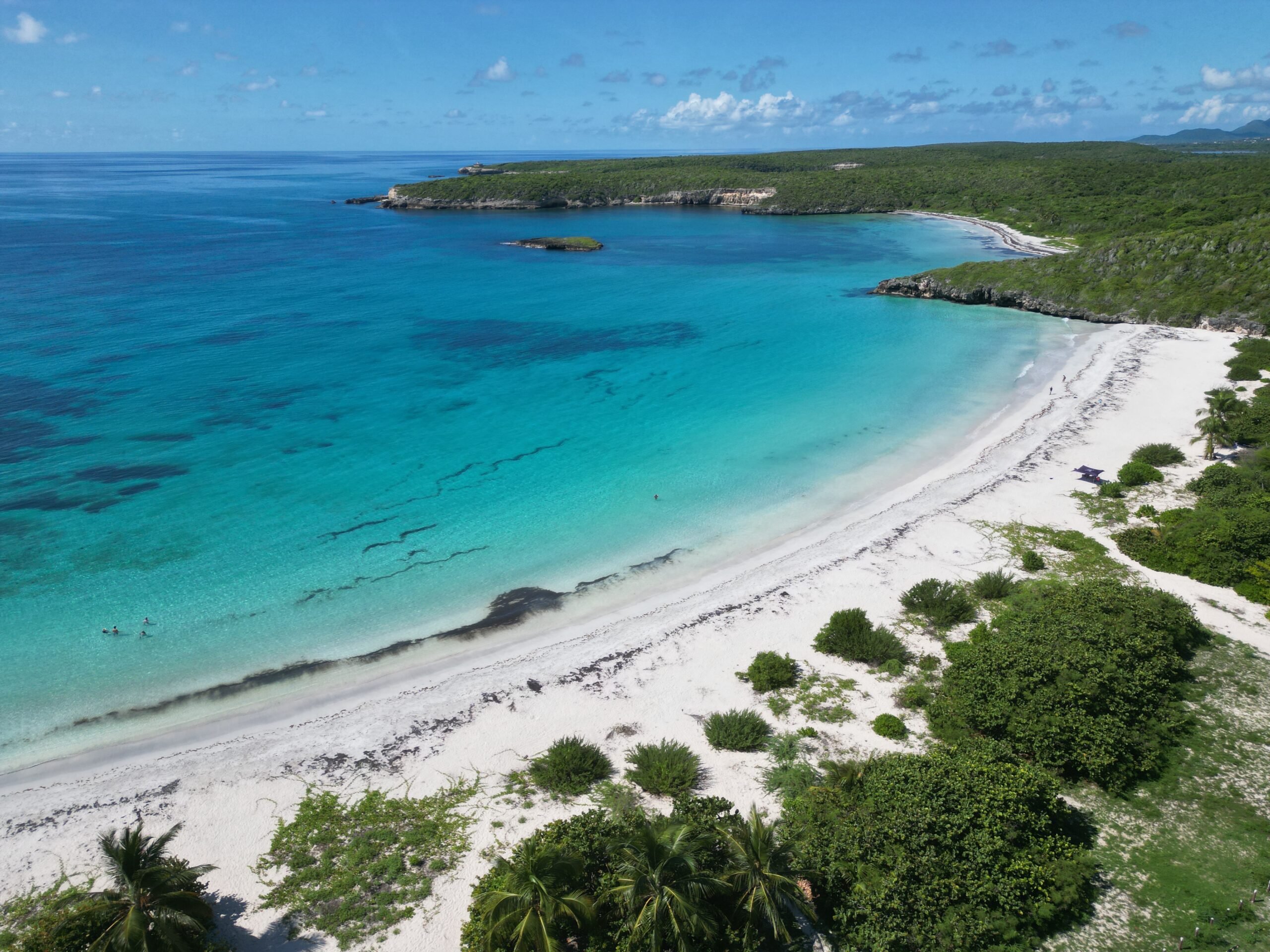
Located in the Vieques National Wildlife Refuge, Caracas Beach has soft, white sand. I think it’s the best beach on the island. It is popular among locals and visitors alike. It has pavilions with picnic tables and BBQ’s which are often all claimed. Generally the water is very calm and clear. This picturesque Caribbean beach will only get more popular in the coming years. It’s cheaper and easier to get to than many of the other beaches on the island. Because the roads are all paved to this beach, you can get there via taxi instead of needing a UTV or golf cart rental.
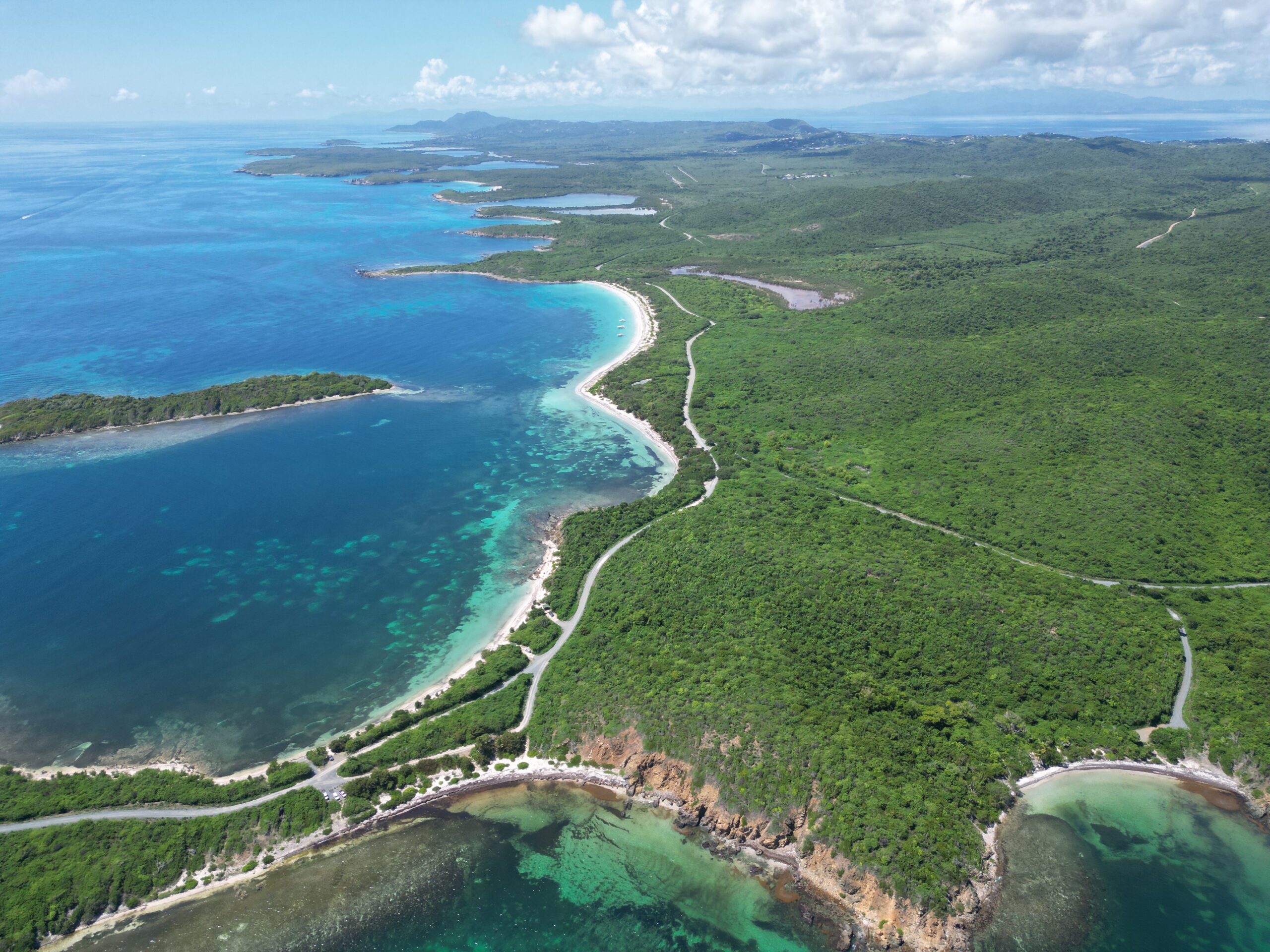
A picturesque beach stretching 1.5 miles along the southern coast of Vieques Island. The sand is almost white, a light grey like the color of dry cement. The water is shallow and crystal clear. To get there, you’ll need to drive down a bumpy dirt road through the Vieques National Wildlife Refuge. You’ll see roads to the right marked 1 – 23. The entrances to La Chiva are numbers 4 – 18. The sandy point in the middle of what looks to be a giant “W” (pictured above) is shallow a long ways out, park at or near #9 to be close. You’re more likely to find seaweed and other debris at numbers 10 – 15.
Drive 20 min back to the town of Esperanza for dinner. This place is one of my favorite restaurants in Puerto Rico and definitely my favorite on Vieques.Grabbing food at Duffy’s at sunset before heading to the bioluminescent bay is a core memory for me now. I suggest the spicy chicken sandwich, it’s a beast. The fish tacos are good and also huge. For something special, try the delicious sesame-crusted ahi tuna.
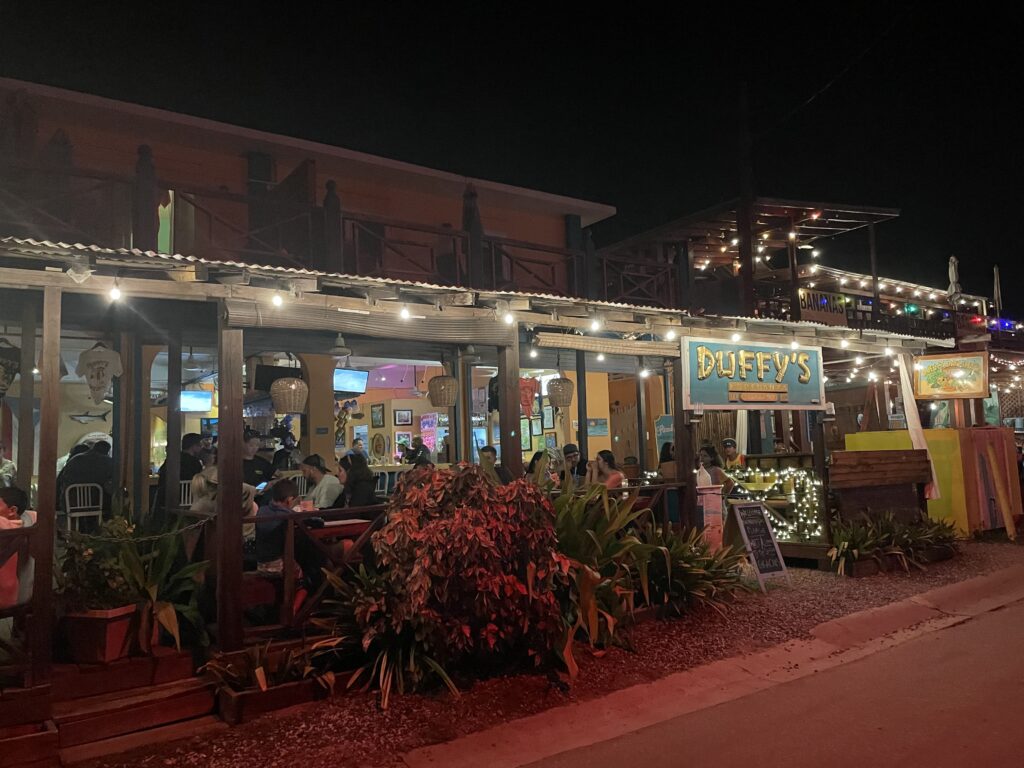
Mosquito Bay
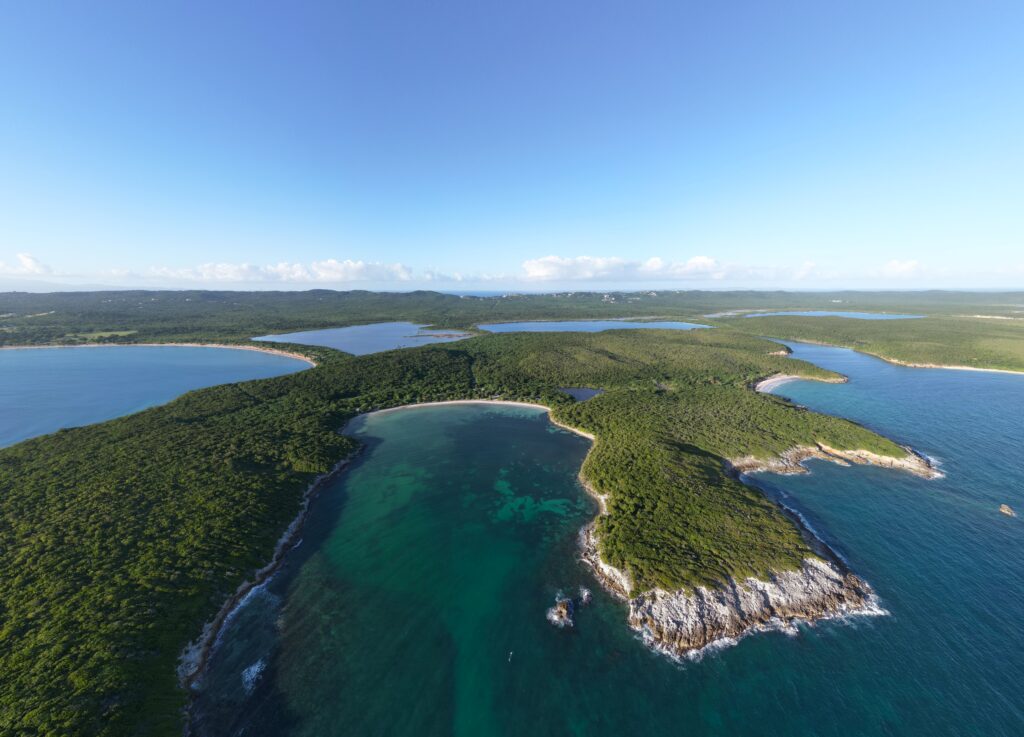
It’s been a full day but we’ve saved the best for last, Puerto Mosquito Bioluminescent Bay, the brightest bioluminescent bay in the world. You can find a tour operator who will rent you kayaks and show you around. Getting a photo of the bioluminescence is impossible unless you have a serious camera for it. I bring my inflatable SUP and we go out by ourselves. If you do the same, I recommend a UTV because the road to get there is very rough. To get into the water you’ll have to slog through nasty mud. Go as close to the new moon as possible. In good conditions you will see perfect outlines of the sea life illuminated beneath you leaving trails of green, shimmering light as you paddle over the dark water.
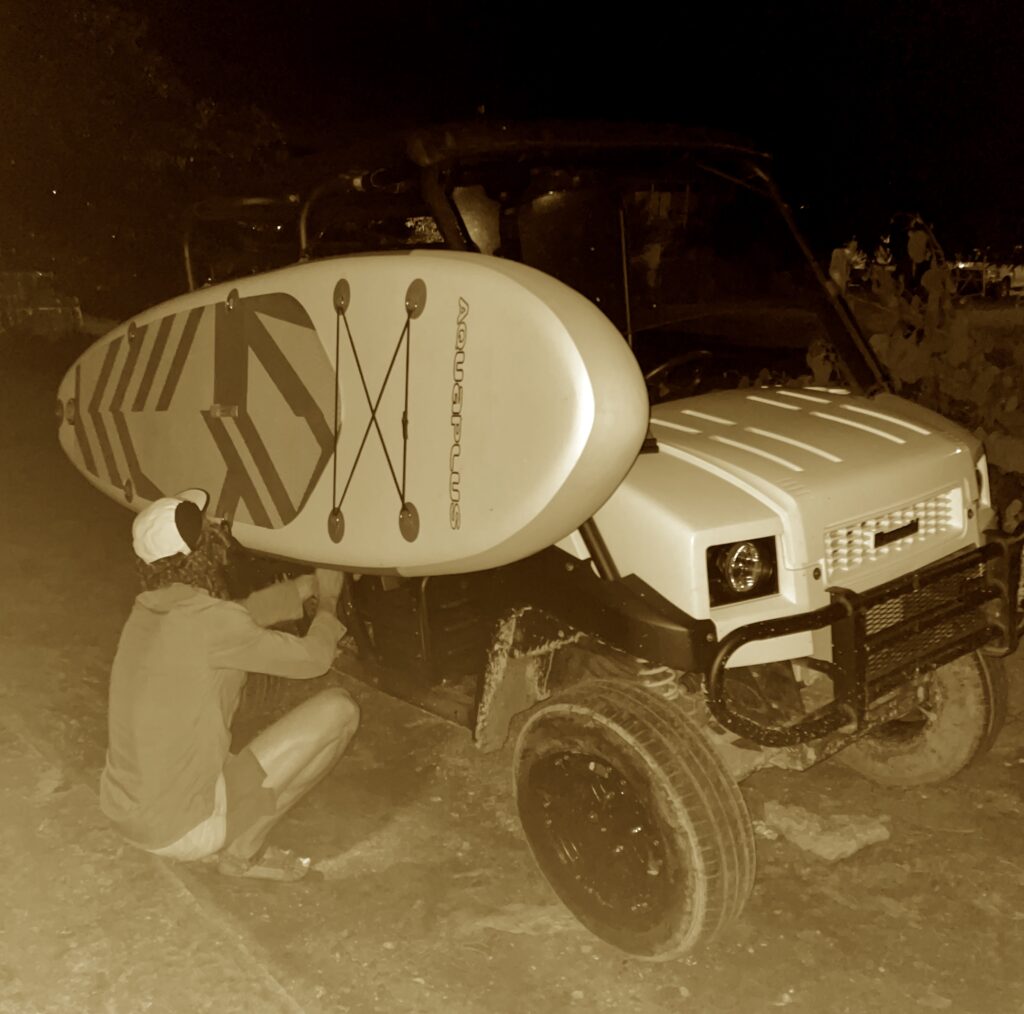
Day 3
Grab breakfast in the morning at a bakery. D’frozz has some good breakfast options. Fill up the tank and return your UTV to the rental company, this does not take more than 15 min. If you are leaving before they open, you can put the keys in a mailbox.
Get to the ferry terminal with some time to spare. Boarding usually starts later than in Ceiba, but it still closes 10min before departure, if it’s on time. After the 30 min ferry ride, drive 1 hour back to San Juan to check out the historic Old San Juan.
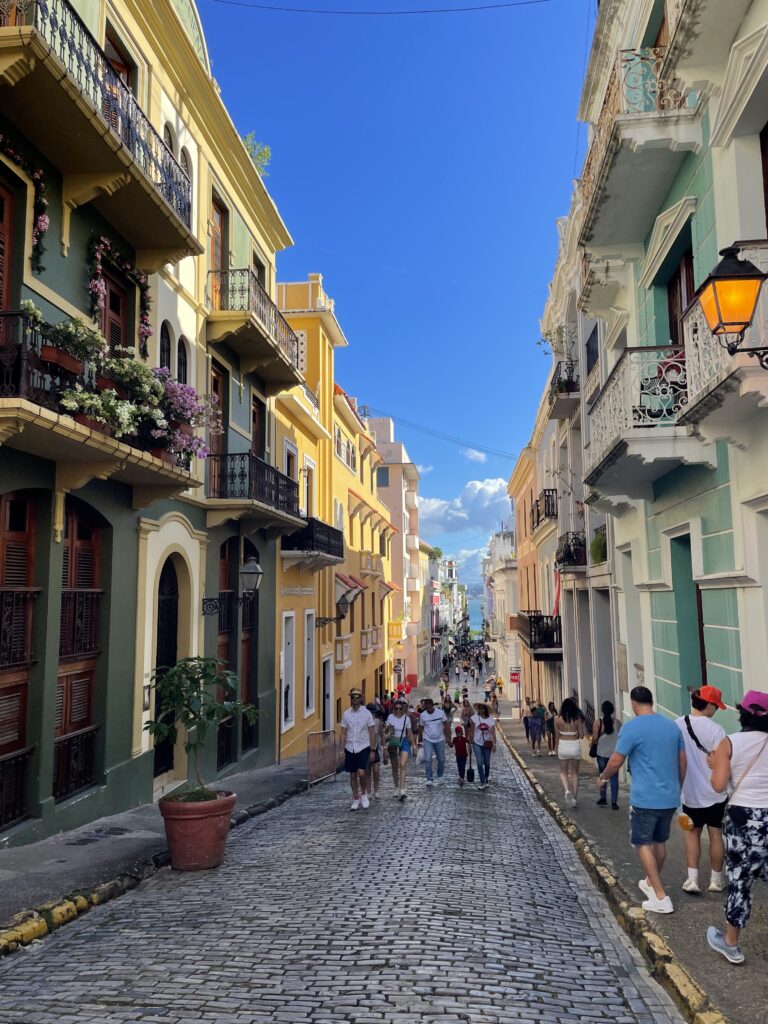
Come prepared with plenty of water, sunscreen, and a hat, it gets hot here! It’s best to get an early start on the day and see Old San Juan while it’s still cooler in the morning.
Established in 1521, Old San Juan is one of the oldest settlements in the Americas and has been designated a UNESCO World Heritage Site for its rich cultural and architectural heritage. I usually spend 4-5 hours walking the walled city.
If you are renting a car, park here to start right next to El Morro, our first destination. If you’d rather walk the city streets first, park here. Either one works and both can fill up on busy days.
El Morro
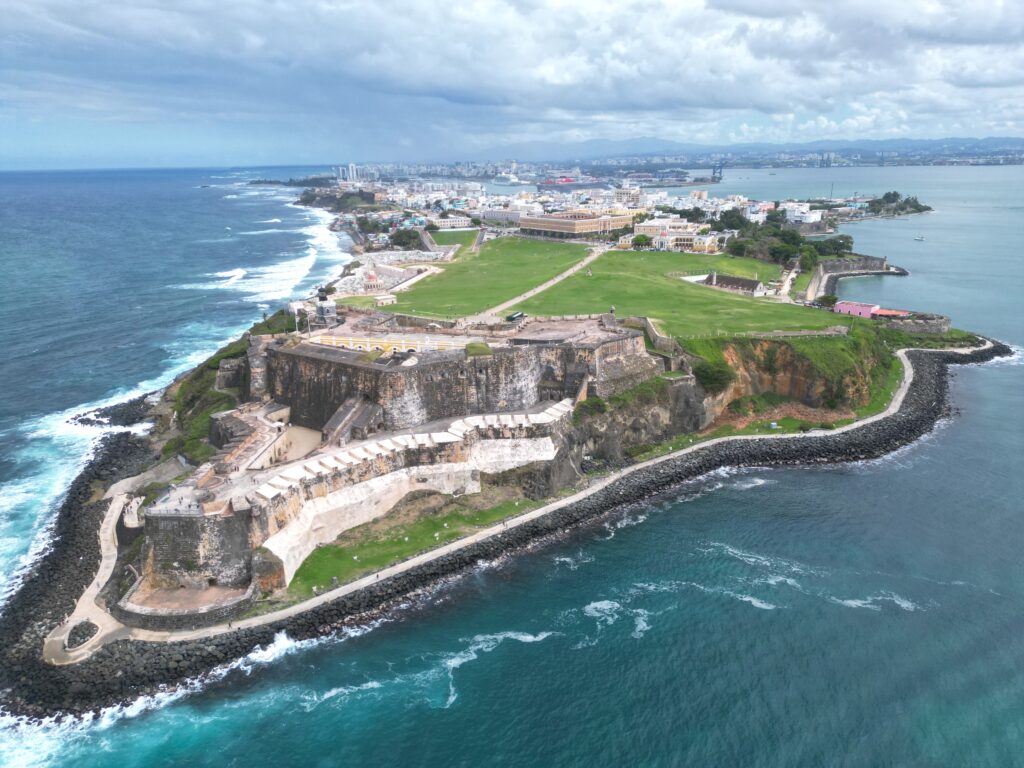
Walk from the parking structure to the nearby Castillo San Felipe del Morro, or El Morro. It’s a 16th-century fortress located at the entrance of San Juan Bay and the main tourist attraction here. Entrance costs $10 per adult or free for National Park pass-holders. It was built by the Spanish to protect the city from attacks by sea and is now one of the most popular tourist attractions in Puerto Rico. Visitors can explore the fortress’s various rooms full of antiques and information plaques, and enjoy the view from the top of the fort. If you visit at night, you won’t be able to enter, but the fort is lit up and is well worth walking around.
Museum of the Americas

From El Morro, you can look back at the town and see a long yellow building three stories tall, to the left. That is the Museo de las Américas (pictured above on the left). The museum houses a collection of artifacts and exhibits that tell the story of the region from pre-Columbian times to the present day. Visitors can see everything from Taino artifacts to contemporary art from Puerto Rico and beyond. When you pay at a booth, they’ll explain the different rooms and what they contain.
Walk The City Streets
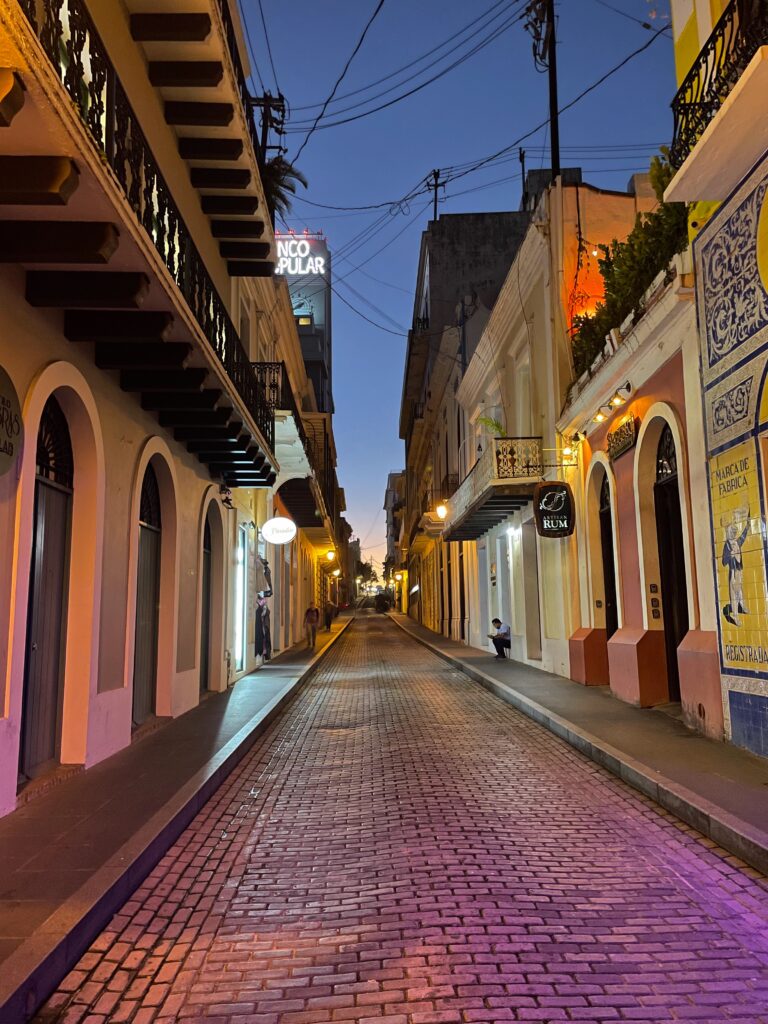
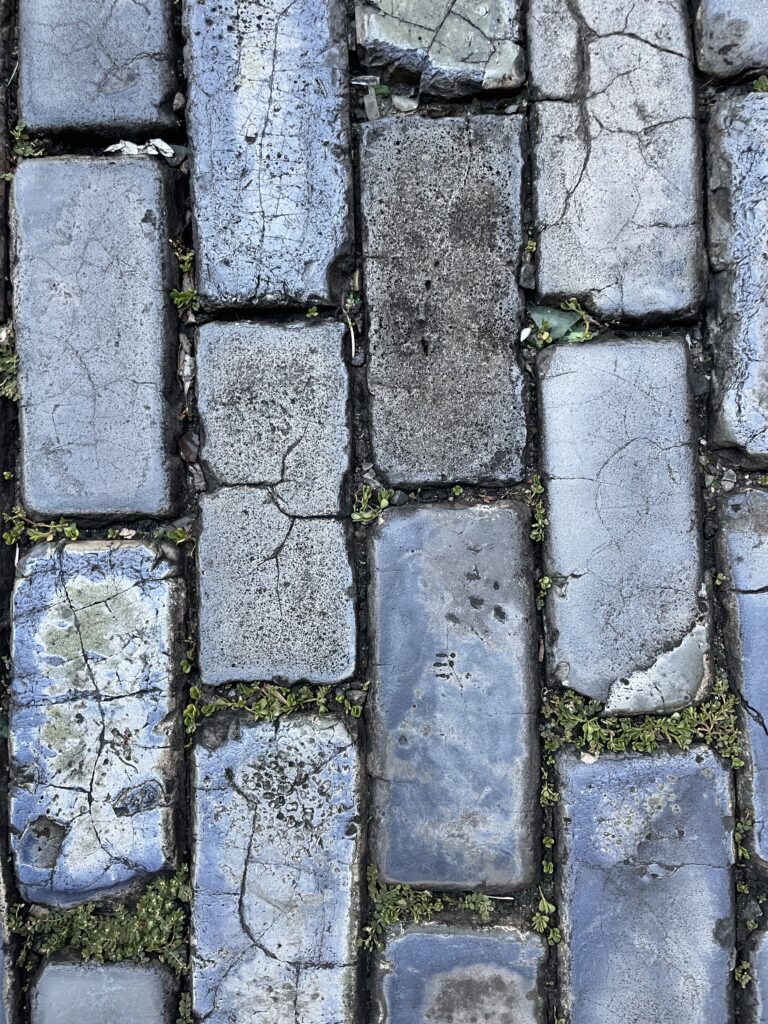
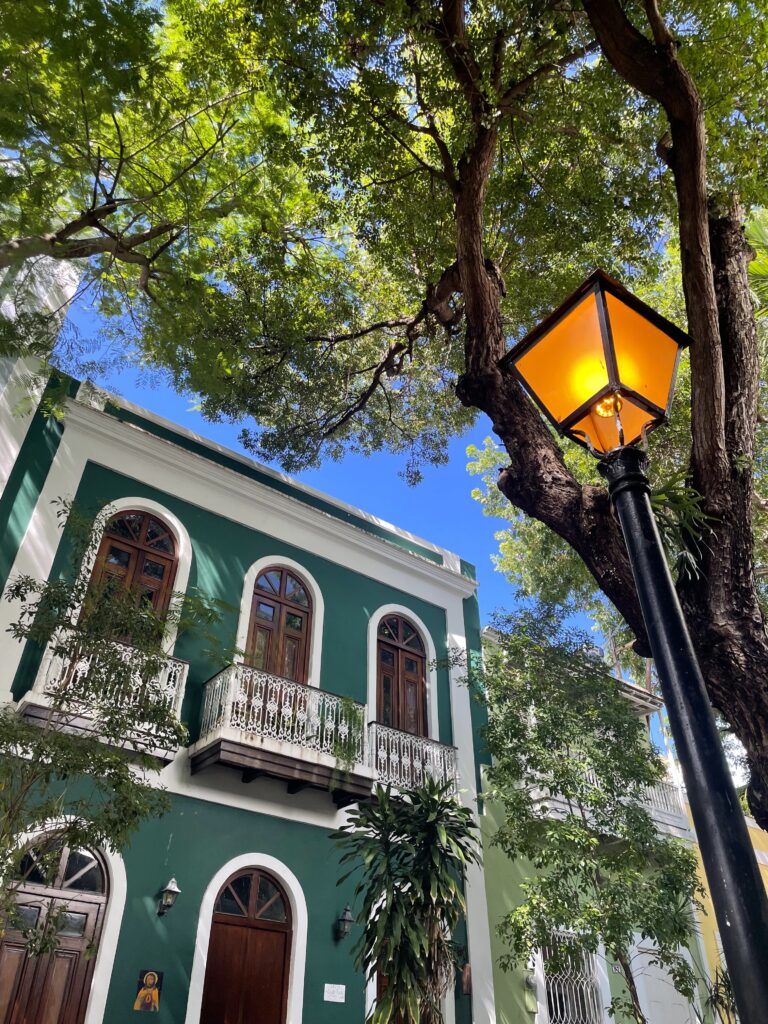
Leaving the museum, you can begin to wander. My favorite thing to do in Old San Juan is walk around the city’s charming streets. From high-end boutiques to local artisan shops, there’s something for everyone here. Even if you don’t plan on buying anything, walking the blue cobblestone streets to enjoy the colonial architecture is well worth your time.
The blue cobblestones were brought to Puerto Rico from Spain in the early 16th century as ballast for ships. The stones are made of blue basalt, a type of volcanic rock, and were later used to pave the streets of Old San Juan. The blue hue is caused by the oxidation of the iron in the rock over time. The stones were initially black, but exposure to the elements caused them to turn their now emblematic shade of blue.
There’s no wrong way to go, but most of the popular attractions are located on the west side of Old San Juan.
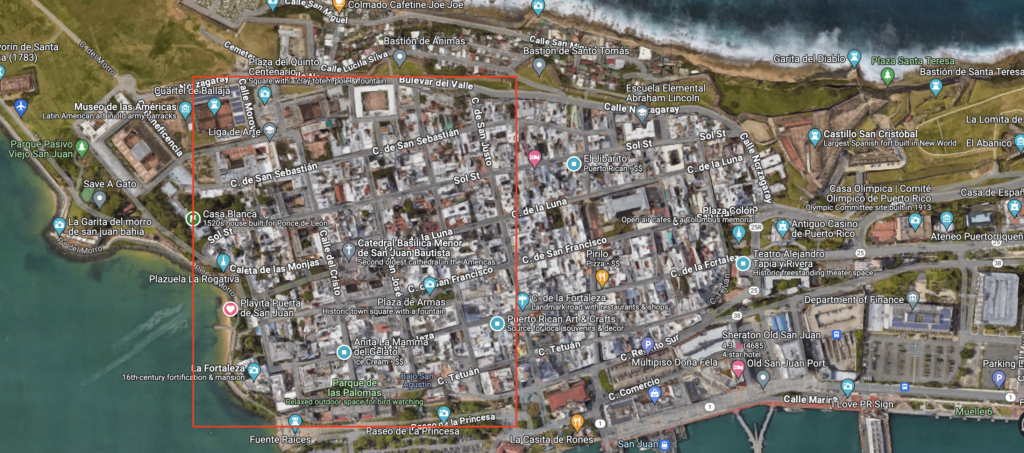
Here are some places you should see while walking the city, some I describe in more detail below:
- The San Jose church, just a short walk from the Museum of the Americas. It was built in 1532 and has been lovingly restored.
- The San Juan Bautista Cathedral (see below).
- The Door to San Juan (see below).
- Puerto Rican Arts & Crafts is my favorite gift shop. It’s full of work from local artists. I highly recommend this shop if you’re looking for a souvenir.
- La Fortaleza (see below).
- Pigeon Park – a park with a lot of pigeons that will land on your body.
- This amazing gelato shop (see below).
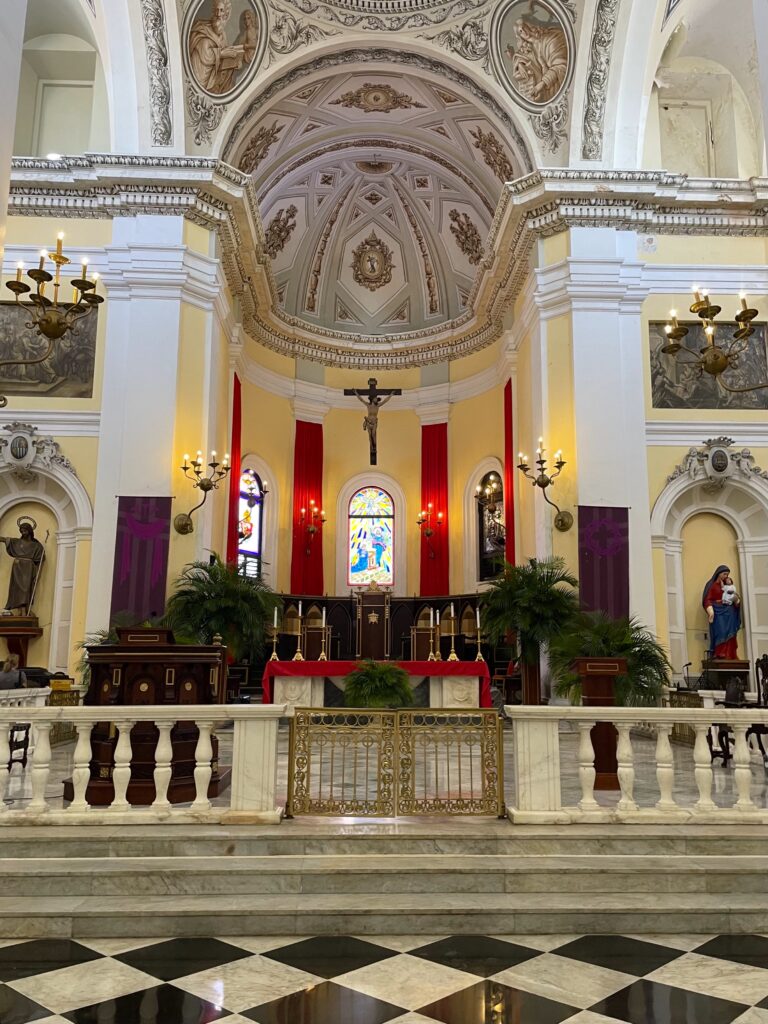
Located in the heart of Old San Juan, the Catedral Basilica Menor de San Juan Bautista is the second oldest cathedral in the Americas boasting an impressive history and architecture. Originally constructed in 1521, the cathedral has undergone several renovations over the centuries, resulting in a unique blend of Gothic and Baroque styles. Visitors can admire the intricately carved wooden doors, stained glass windows, and vaulted ceilings.
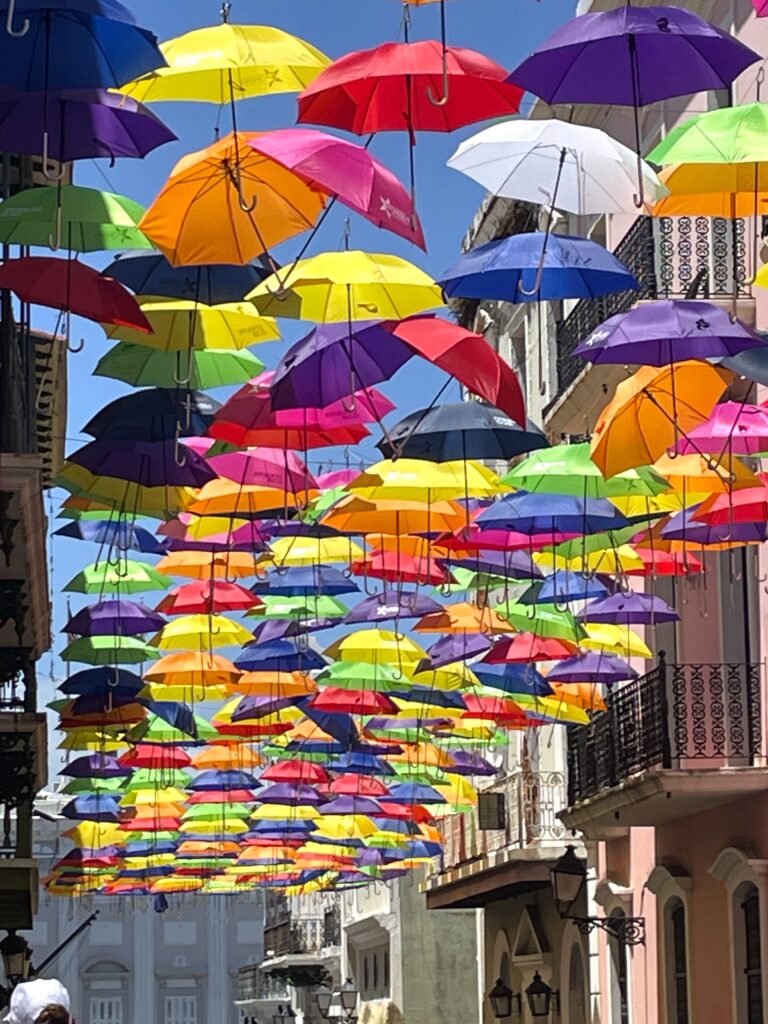
La Fortaleza is an iconic manor located in Old San Juan, Puerto Rico. Built in the 16th century, it is the oldest executive mansion in continuous use in the Americas, serving as the official residence of the Governor of Puerto Rico (closed to all but scheduled tours). You can catch a glimpse of it from here, down a closed street that it is decorated with colorful hanging umbrellas.
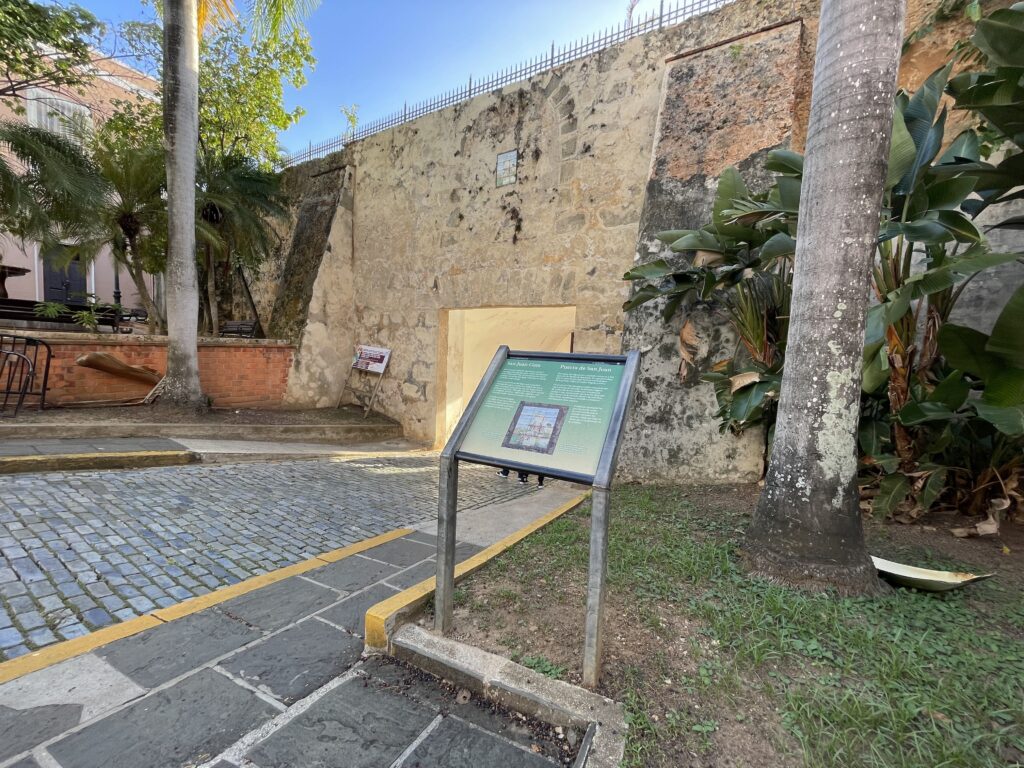
The Puerta de San Juan is the main, and only remaining entrance into the walled city from colonial times. Spanish sailors would arrive at the island after sailing from Europe, they’d enter and walk directly to the cathedral just up the road to give thanks for their safe passage.
Playita Puerta de San Juan
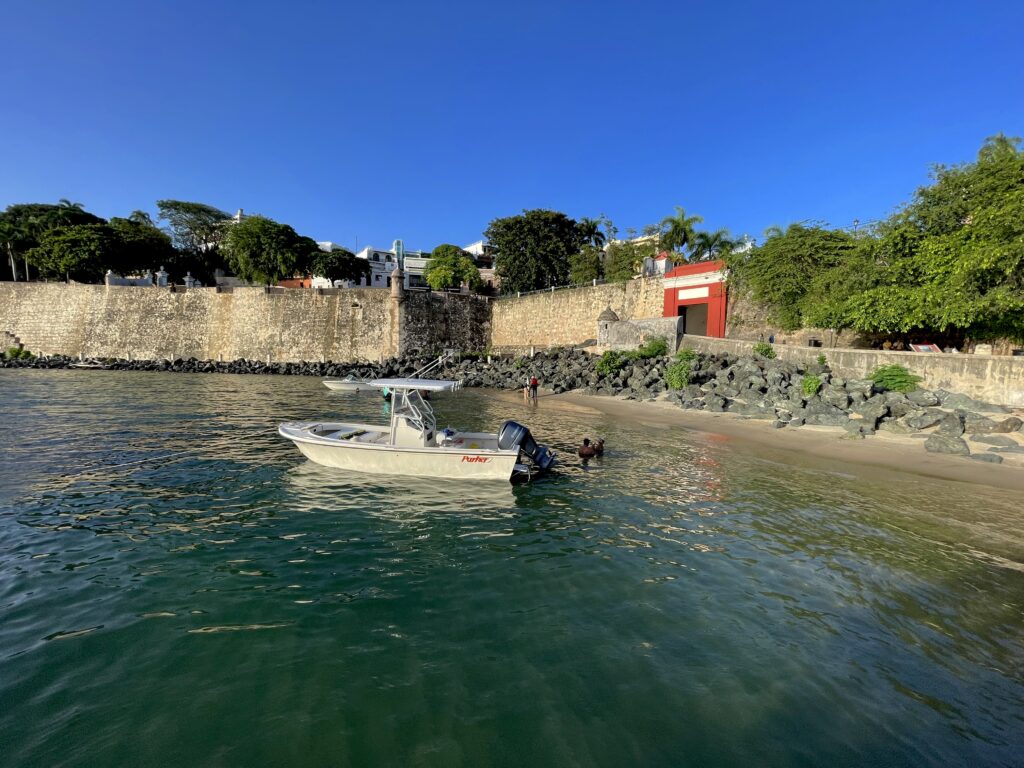
This is a small beach outside of the Puerta de San Juan. It’s a great place to cool off from walking around Old San Juan. The view from the beach of the 300 year old walls and recently restored turrets is beautiful. You’ll have to scramble over large rocks to make it to the narrow strip of sand.
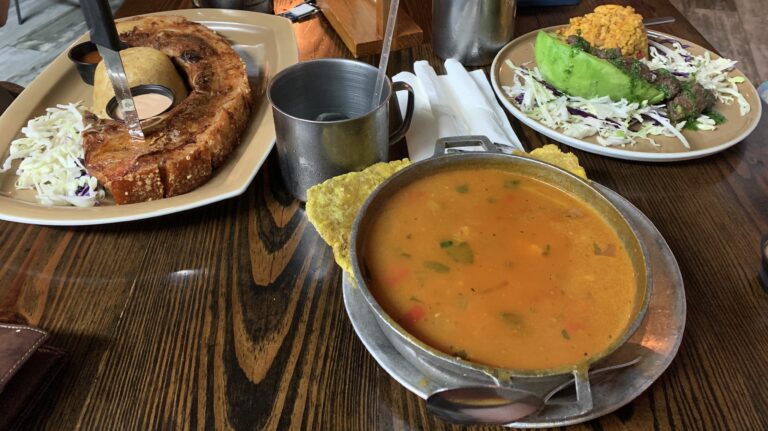
If you are looking for a place for lunch, you can never go wrong with Restaurante Raíces. Raíces offers quality, traditional Puerto rican dishes. It’ll cost more than some other places, but in this case you really get what you pay for. Every time that friends or family visit me, I take them to Raíces and it never disappoints. The restaurant’s theme is “jibaro”, styled after the farmers of past generations that made a living off the land, living in the country. The servers dress in their fashion and the restaurant is painted with beautiful murals of country life. This may be the best place to try mofongo, and carnivores should try the enormous chuleta Kan Kan. Stay away from the fish tacos (there are better places for that).
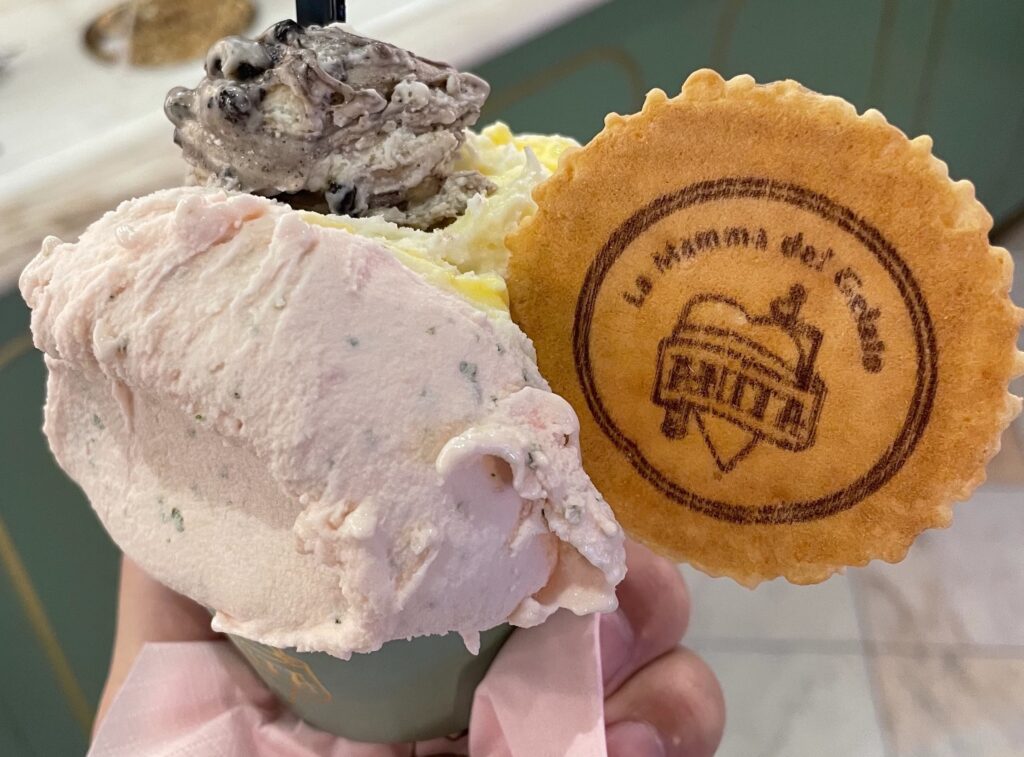
Cool off with some quality gelato at Anita La Mamma del Gelato
Usually a long line, but so worth it! Located conveniently near attractions like Parque de las Palomas and La Fortaleza. Every flavor is good! I can’t help but get the watermelon mint as one of my flavors every time. Try some samples before settling on a couple flavors (you’ll want more than one, trust me).
Escambrón Beach
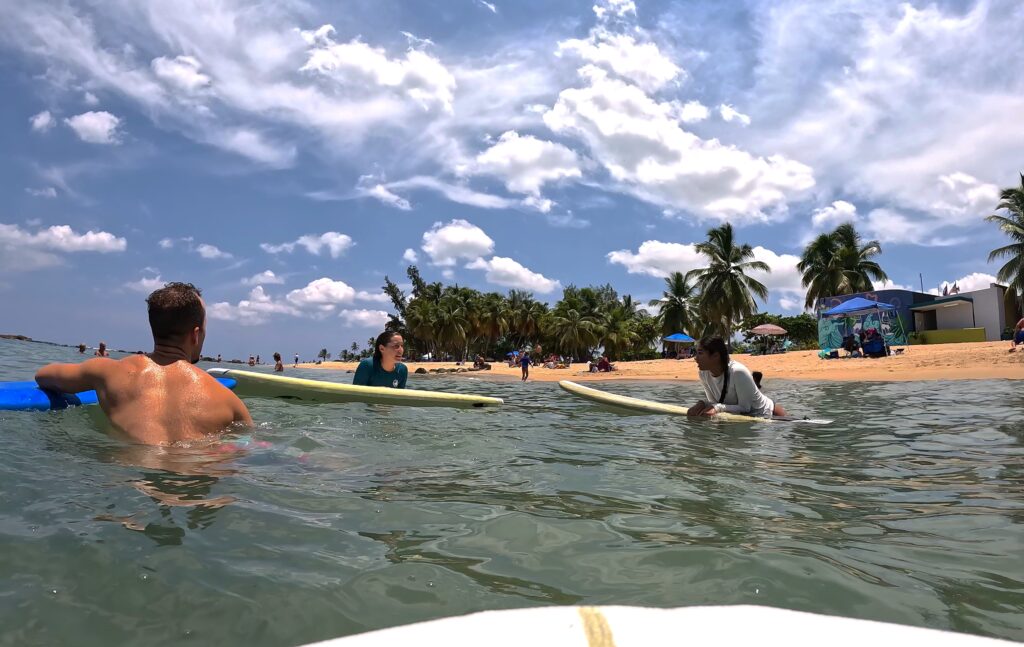
After lunch, cool off in the water. Walk or drive over to Balneario del Escambrón. It’s the best beach in the area and I go all the time. You can find a free parking spot along the perimeter of Luis Muñoz Rivera Park, or just pay $5 for the parking at the beach. Relax on the beach in the shade of a palm tree and watch the sun set. For those with some experience, rent a surfboard from La 8 Surf Shop. The owner is really helpful if you have any questions. If you have snorkel gear, there are two protected areas here where you can do some snorkeling. It won’t be the best snorkeling you’ll ever do, but it’s still fun. Or, rent a scooter to explore the surrounding area.
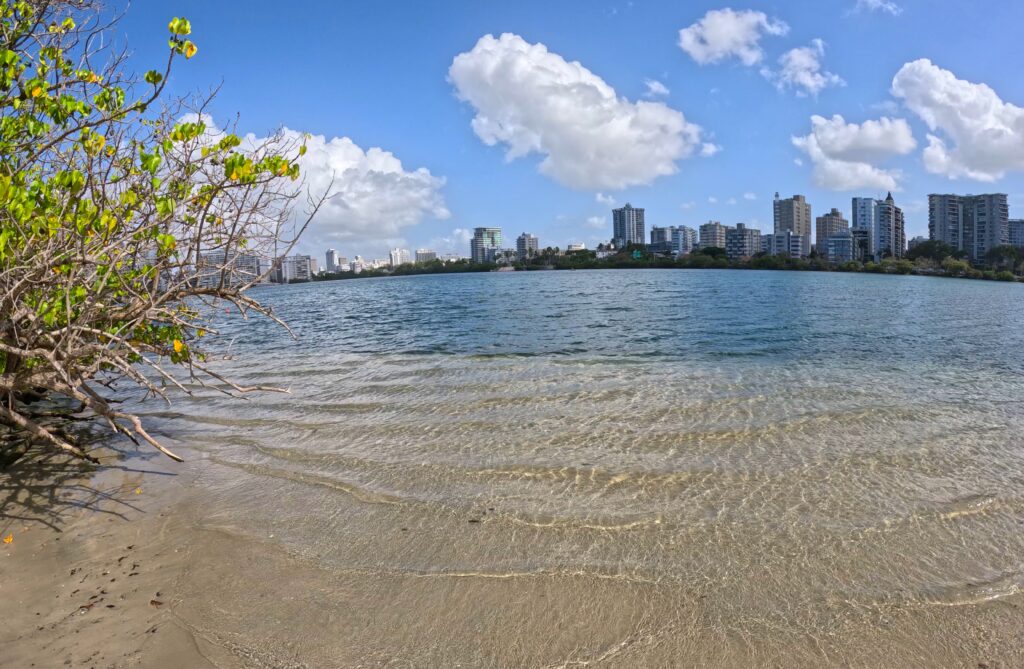
Alternatively, you can check out Condado. The Condado area is a main tourist hub, it has great restaurants, some of the best hotels in San Juan, and some decent, popular beaches. These beaches are more popular than Escambrón Beach, but will feel less crowded because they are much bigger. Ocean Park Beach, Condado Beach, and Isla Verde Beach are the main beaches in San Juan. They’re all similar. Condado Beach is the closest to Old San Juan. At Ocean Park, there are spots to play beach volleyball or tennis and it’s a favorite spot for windsurfers.
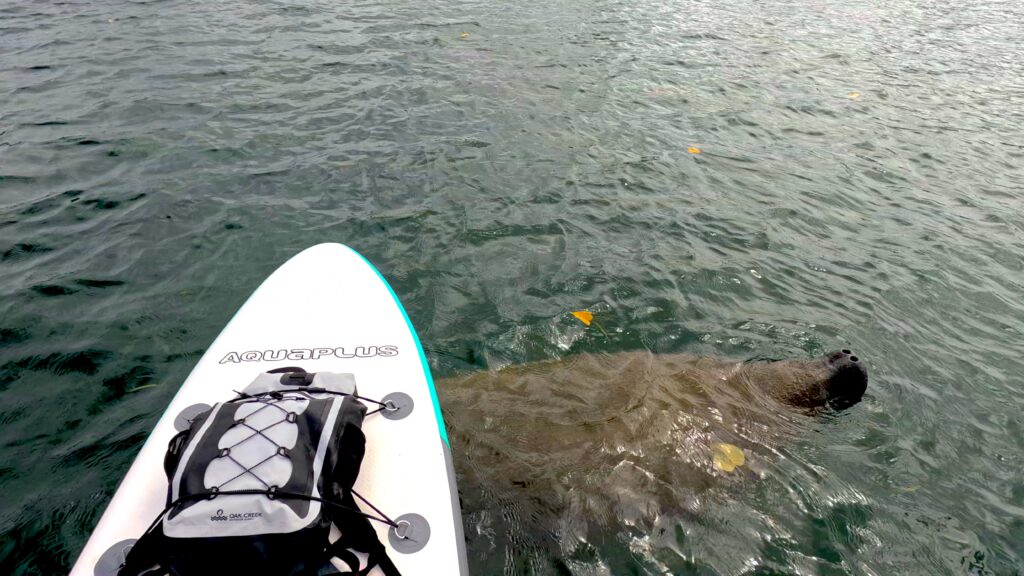
The Condado Lagoon is surrounded by a bustling metropolitan area. You can rent kayaks or paddle boards from multiple outfits. I own an inflatable SUP so I park and put in here. If you’re lucky, you may see manatees grazing during the day! If you’re even luckier, you may see the water illuminate with bioluminescence at night (I’ve seen each of these phenomena once). The wind can be strong on the lagoon, making paddle boarding difficult, but not impossible. If you were considering renting a paddleboard, switch it for a kayak on a windy day.
For dinner, there are many options in the Condado area for you to choose from. I can recommend Ropa Vieja and KOSAN. They are located within walking distance so you can check out the menu of both before deciding. I really like Puerto Rican Chinese food and think you should give it a try at some point during your trip! Stay the night in San Juan.
Day 4
Today you’ll be beach hopping along the north coast of the island. The north coast has so many beautiful beaches, you couldn’t possibly see them all in a day. We’ll have to pick and choose which ones to see. For a complete guide to beach hopping along the coast, check out this itinerary. There is so much to do in this region of the island, but here is how I recommend you spend the day:
Leave San Juan after breakfast. If you are interested in trying some unusual dishes, head over to El Caracol restaurant in Toa Baja. They have the typical paselillos (empanadas) of pork, chicken, and crab. They also offer more exotic meats like sting ray, caiman, and iguana.
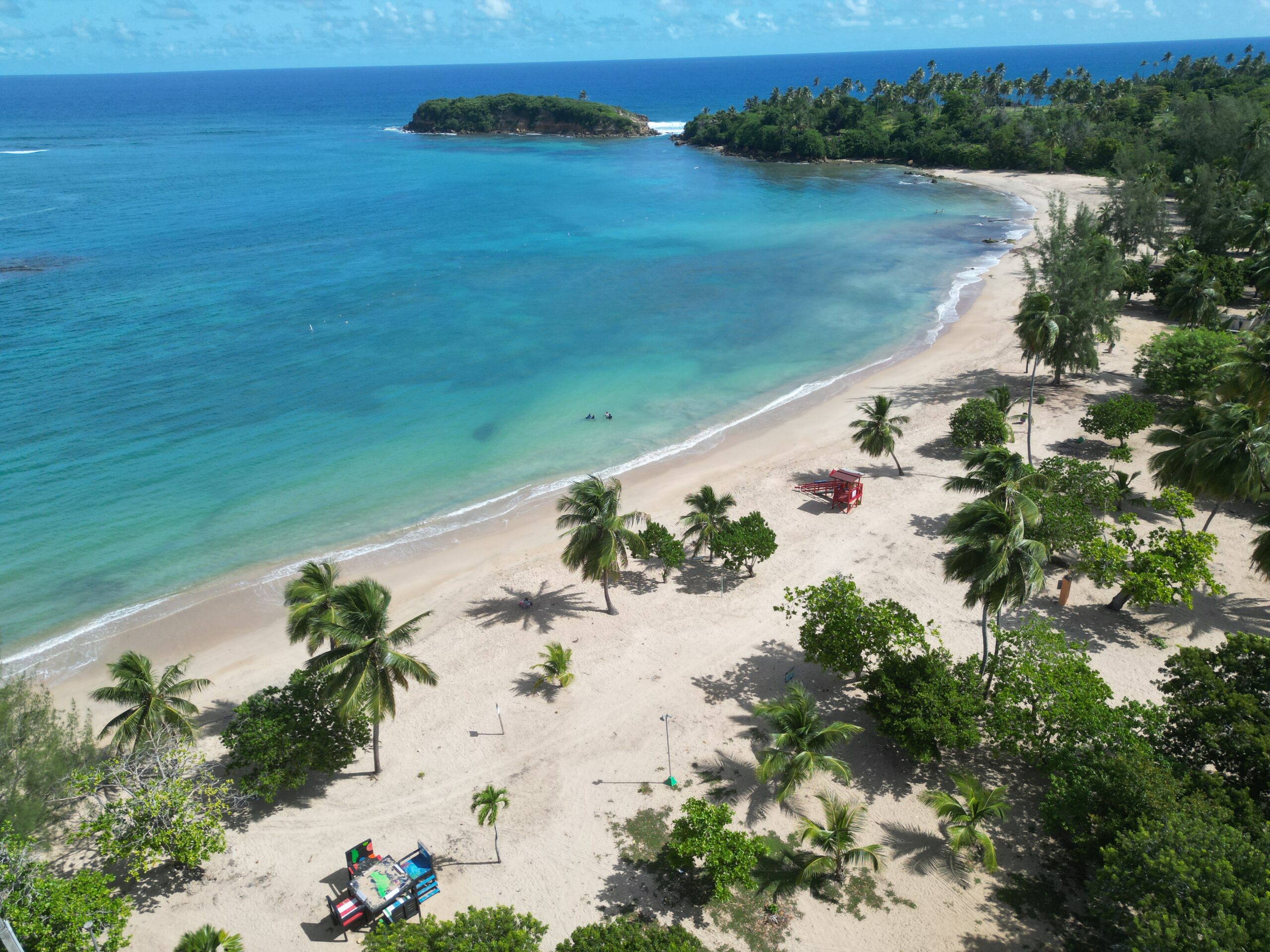
The first stop is a calm, shallow beach in Vega Alta. Cerro Gordo looks like a smaller Luquillo Beach to me. The main part of this beach is surround by a paid parking lot ($4). A small key is visible off the coast. There are mountain biking trails nearby and apparently the snorkeling is decent by the key. There are showers to rinse off.
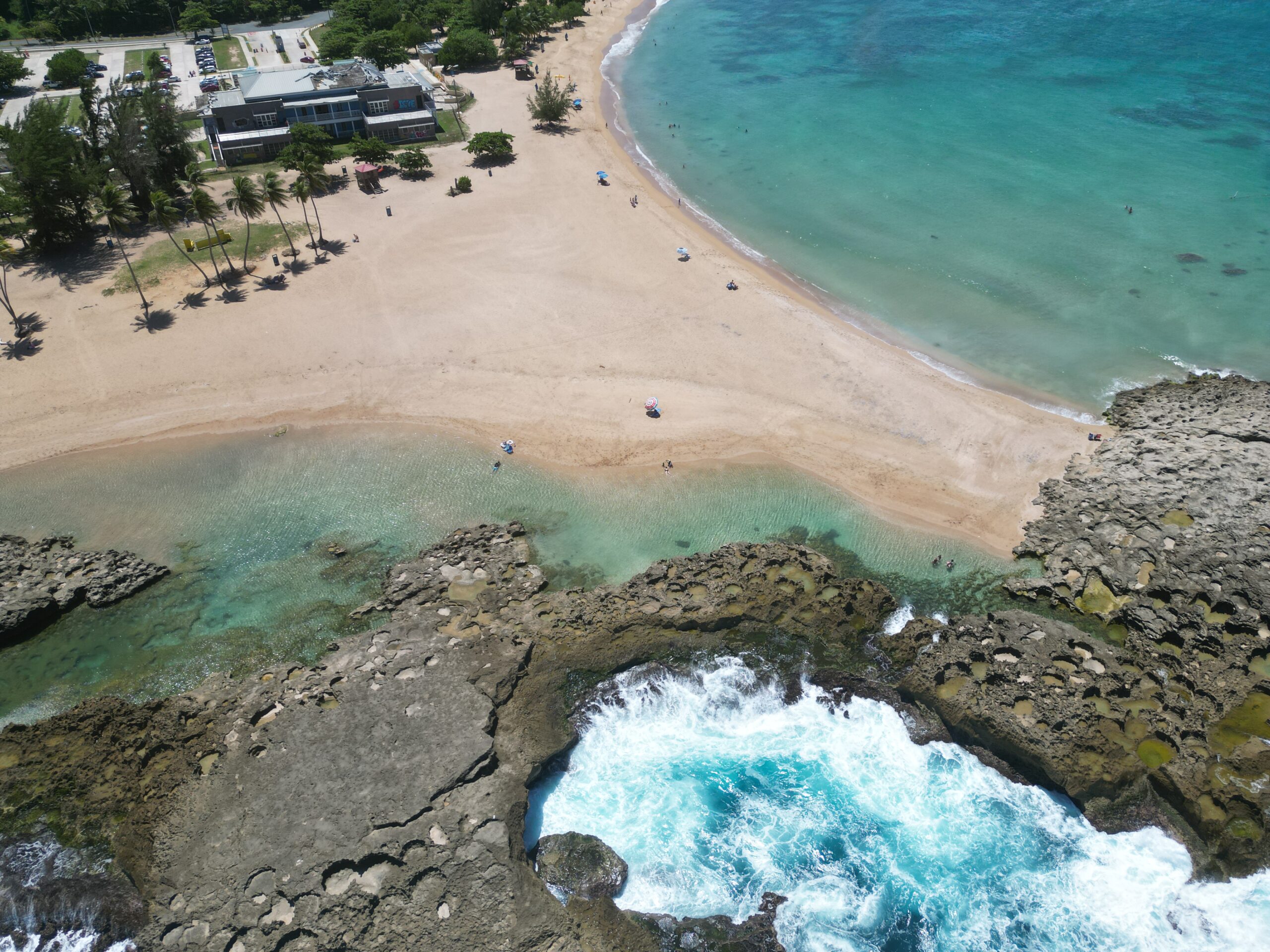
Next is a very unique beach in Vega Baja. It’s a sandy point sticking out like a small peninsula runs into a wall of rocks parallel to the coastline. Laying on the sand, you’ll find water on either side of you. One side is protected by the rock which creates a natural pool. There was a surprising amount of fish in and near the mouth of this pool when I last went so I had a good time snorkeling. This beach can get extremely crowded, go before noon to beat the crowd. For me, visiting on a weekend isn’t even worth it.
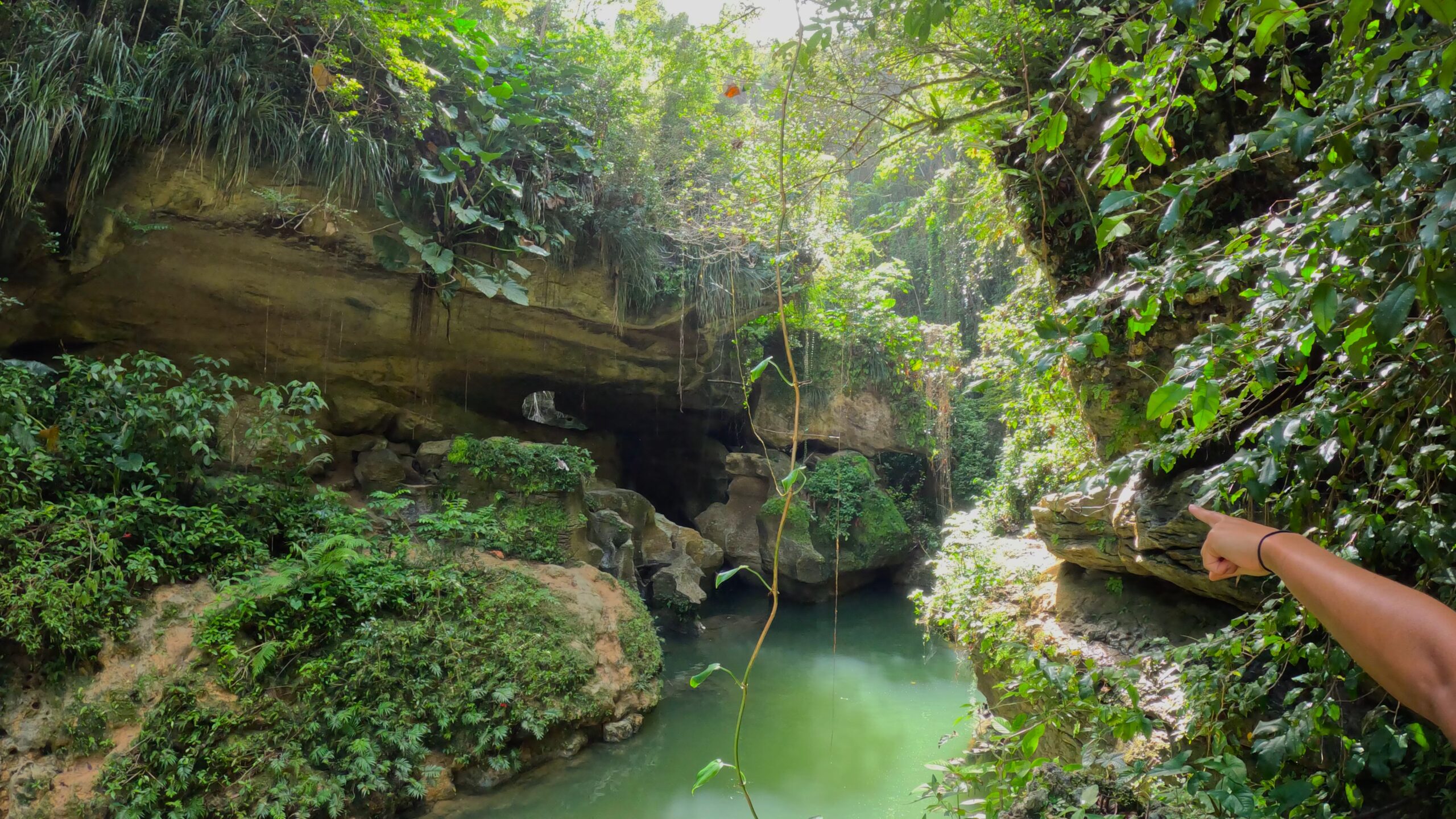
Next, drive inland to explore a magical part of the Morovis River. The so-called sand caves could be a gateway to Narnia, they look so magical. A short hike along and through the riverbed brings you to a high ceilinged cave. The cave goes all the way through revealing a smaller, clear stream on the other side. Natural clay deposits can be found on the stream bed here that you can rub on your skin, treat yo’ self! Inside the cave you can climb up the rock and jump into the narrow river from about 20 feet up. Parking costs $5 on someone’s property, park on the road closer to the trailhead at your own risk as theft is apparently a problem here.
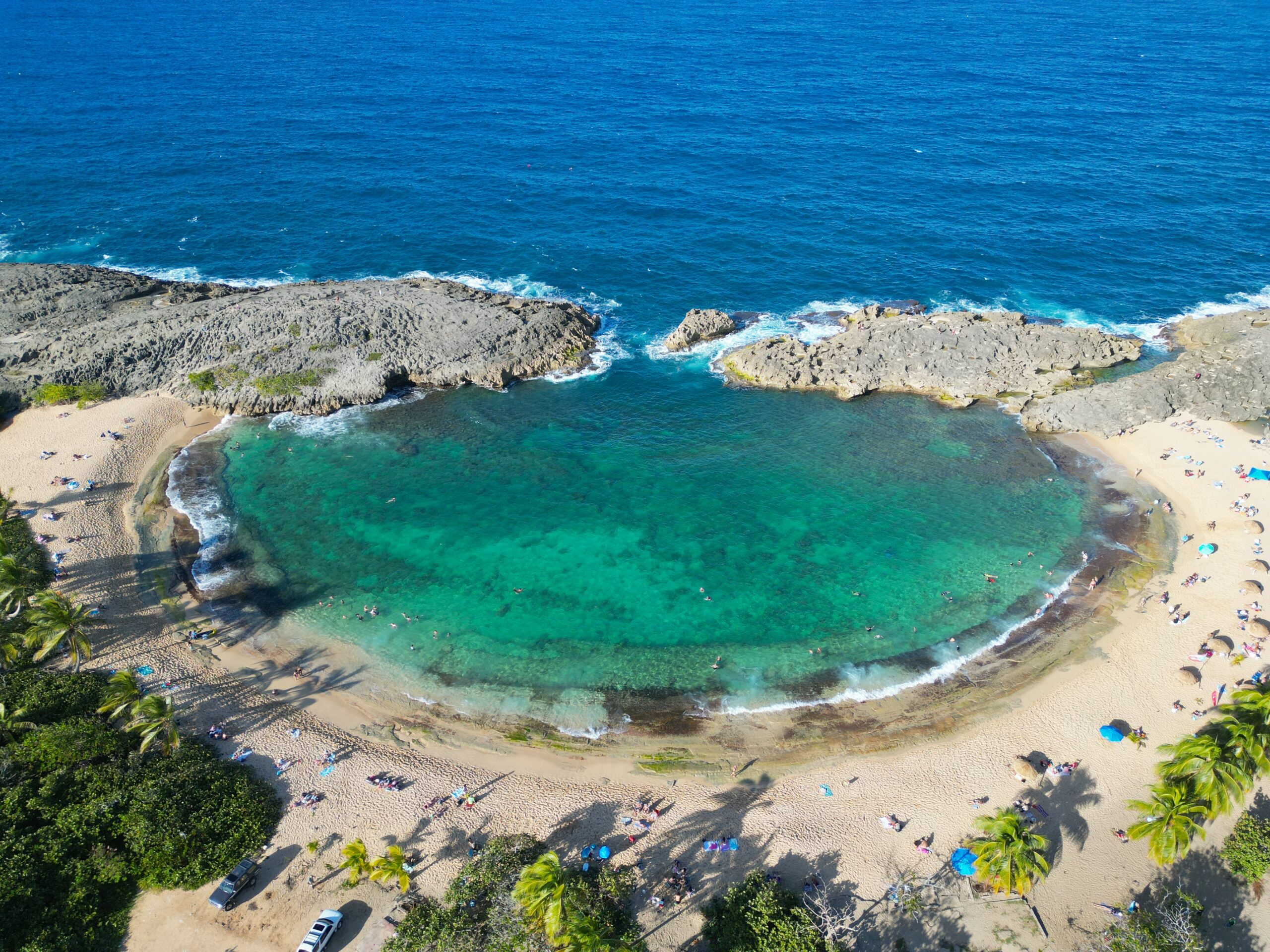
Return to the beach in Manatí. This may be the most unique beach I have laid eyes on. When it’s calm you can do some snorkeling, when the waves are big you can watch them explode violently on the rock. When the waves are just right you can even surf here, I’ve done it! I often stop by this beach with visitors just to show it to them while driving along the north coast. The rocky shoreline limits the areas where you can lounge in the water. The rocks on the left are safe to climb, the rocks on the right are not when there is big surf.

For much of the year, this beach in Manatí is not worth visiting. The wind is strong and the waves are rough. I have walked past this beach many times and never seen anyone on it. But, if the conditions are just right, this beach transforms. In the summer, when there is very little surf, the water becomes crystal clear and Caribbean blue, rivaling any beach on the island. Park on the left side of the road and walk down the dirt road until you see a sign for the beach. June through August is your best bet, but even then rough shore break waves can ruin it. If you’re visiting in the summer, it’s worth rolling the dice to see if you can catch this beach when the stars aline.
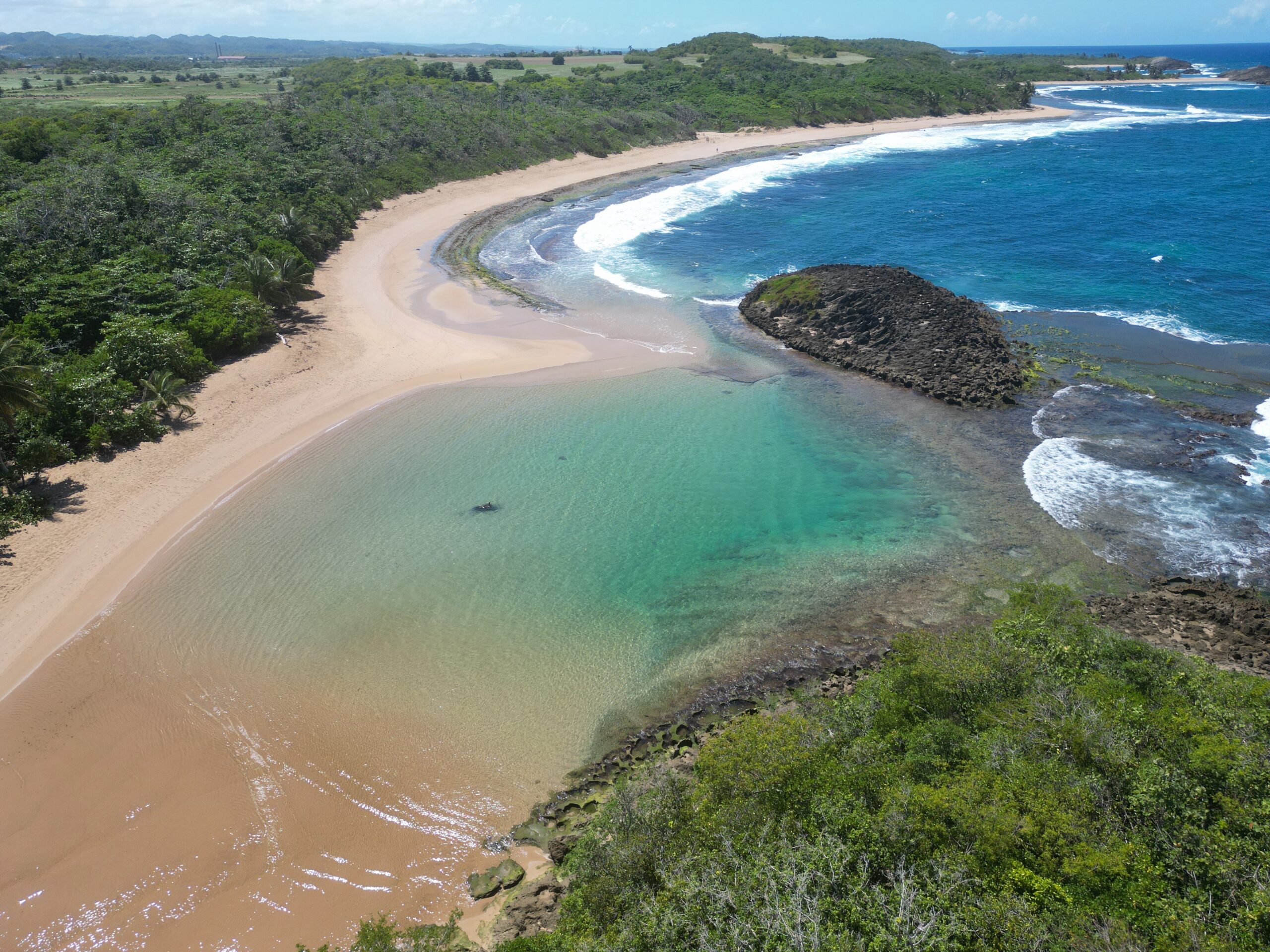
If you are visiting in the winter or Las Palmas beach is too rough, come here. Just down the road is this protected spot on the coast. It’s as close to a natural swimming pool as I have found. This beach is protected by rocks and has a sandy bottom throughout. Fresh water from a natural spring runs into the pool in an extremely shallow river. If you look around underwater, the top 6 inches or so is hazy from the fresh and salt waters mixing. Getting to this beach requires a 10 min hike through a small forest, park here. You can walk in front of or behind the abandoned buildings, there is a trail on either side. This beach attracts nudists for whatever reason so be prepared for that. Though it is secluded, this beach still gets busy on weekends.
Before leaving Manatí, grab lunch at our go-to panadería on the north coast. Their oatmeal, toast, pancakes, sandwiches, and pastelillos are all excellent. Most panaderías are pretty similar but this one is better than most. The bacon, egg, and cheese sandwich on the local bread – pan sobao is my favorite breakfast item. They have a lot of lunch options as well.
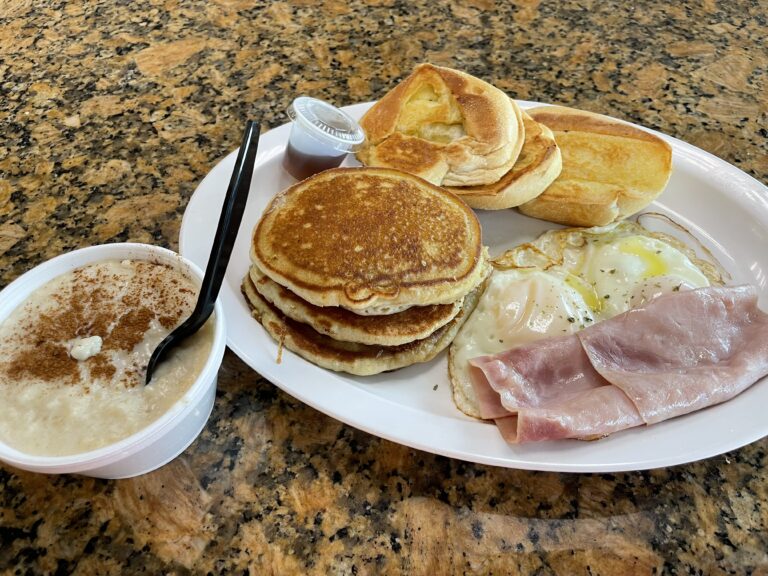
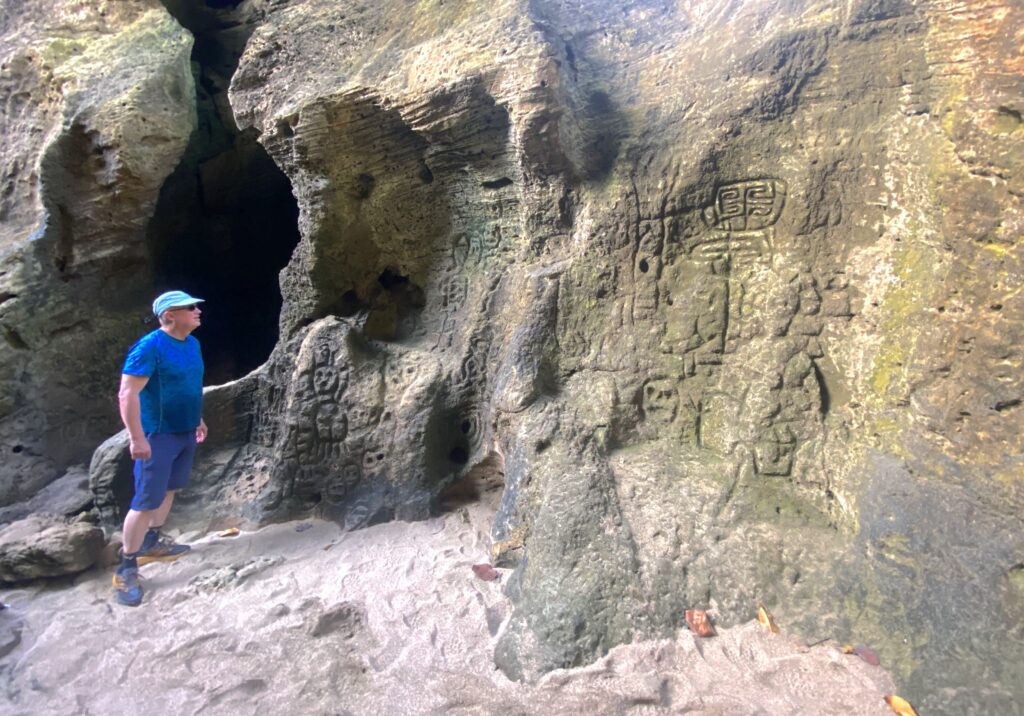
From Manatí, make the 40min drive to the Cueva del Indio Nature Reserve, the most important Taíno site on the island. The indigenous people that populated the island before the Spanish found it, carved hundreds of markings all over the inside of a rocky cove. To see them face to face isn’t for the faint of heart. Sneak through a small slit in the rock, spiderman-walk the two walls, and hop to a rock dodging a steep fall. If thats not for you, you can still see markings looking down into the cave, but not nearly so many as when you are down there. I believe there used to be some kind of ladder but that is gone now and can not be replaced due to laws protecting the site. Entrance fee is steep at $10.00 per person because you must park on and cross private land. They close the parking lot at 5:00pm.
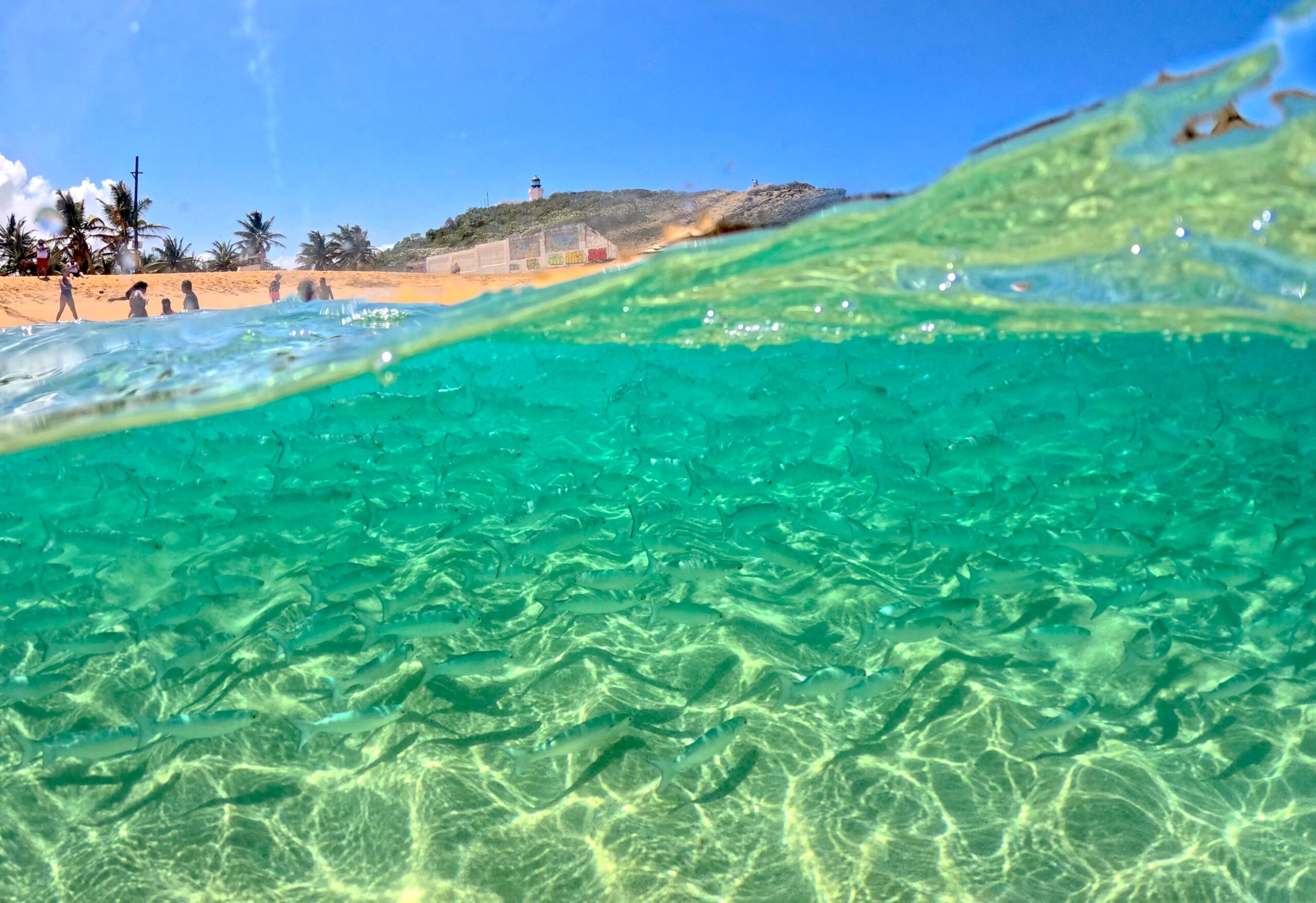
After looking at the petroglyphs, end the day at one of my personal favorite beaches. It’s basically a natural swimming pool where rocks enclose a sandy pool of clear water. In the winter, big waves break on those rock and blast water high into the air to rain on those that stand close to the rocky perimeter. This also creates a kind of wave pool that is fun to play in, though currents can get strong. In the summer the pool is calm and clear. It gets really windy often, so umbrellas won’t work. Also, it is a very small area and can get very crowded. On the upside there is a shower to rinse off (rare in PR) and an ice cream man. Watch the sun set behind the lighthouse and the water’s surface turn opaque and shimmer in lilac.
Eat dinner looking out over the darkening Atlantic Ocean at Salitre. Spend the night in Arecibo and get ready to see more beaches tomorrow. You came to an island so no complaining, it’s the best thing to do and there are so many to see!
Day 5
On day 5 you’ll be headed inland to see the beautiful forests and rivers of Puerto Rico. This area is less-frequently visited than any other place on the itinerary and it’s a shame because it’s beautiful.
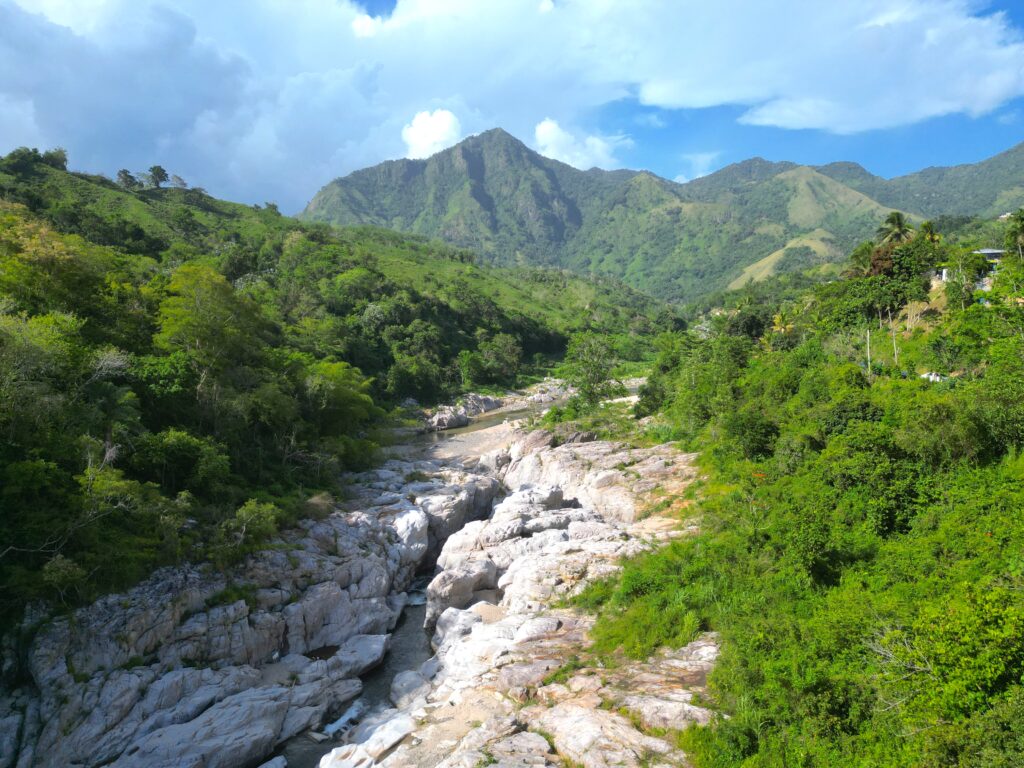
Drive south on the beautiful highway 10 through the town of Utuado. When getting there via Google Maps, make sure you pass this church. If not, it might take you down a road on the other side of the river where you’ll find a locked gate blocking the route. There is one other route not passing the church, but add it as a stop just to be safe. Looking out over the white canyon is one of the best views on the island. The white rock is primarily composed of limestone, a sedimentary rock formed from the accumulation of marine organisms, such as coral and shells, over millions of years. This limestone has been carved by the river to create a narrow and dramatic gorge. The contrast between the white rocks and the tall, green mountains looming on all sides creates a striking visual spectacle. The water is warm and the depth varies depending on rainfall. Cross the river when the riverbank is at ground level and backtrack a little to enter the water. This is where you’ll find the best spot to hang out in the water, next to the El Sofá, a vaguely sofa shaped rock you can sit on. Look out for glass on the river bottom.
La Piedra Escrita
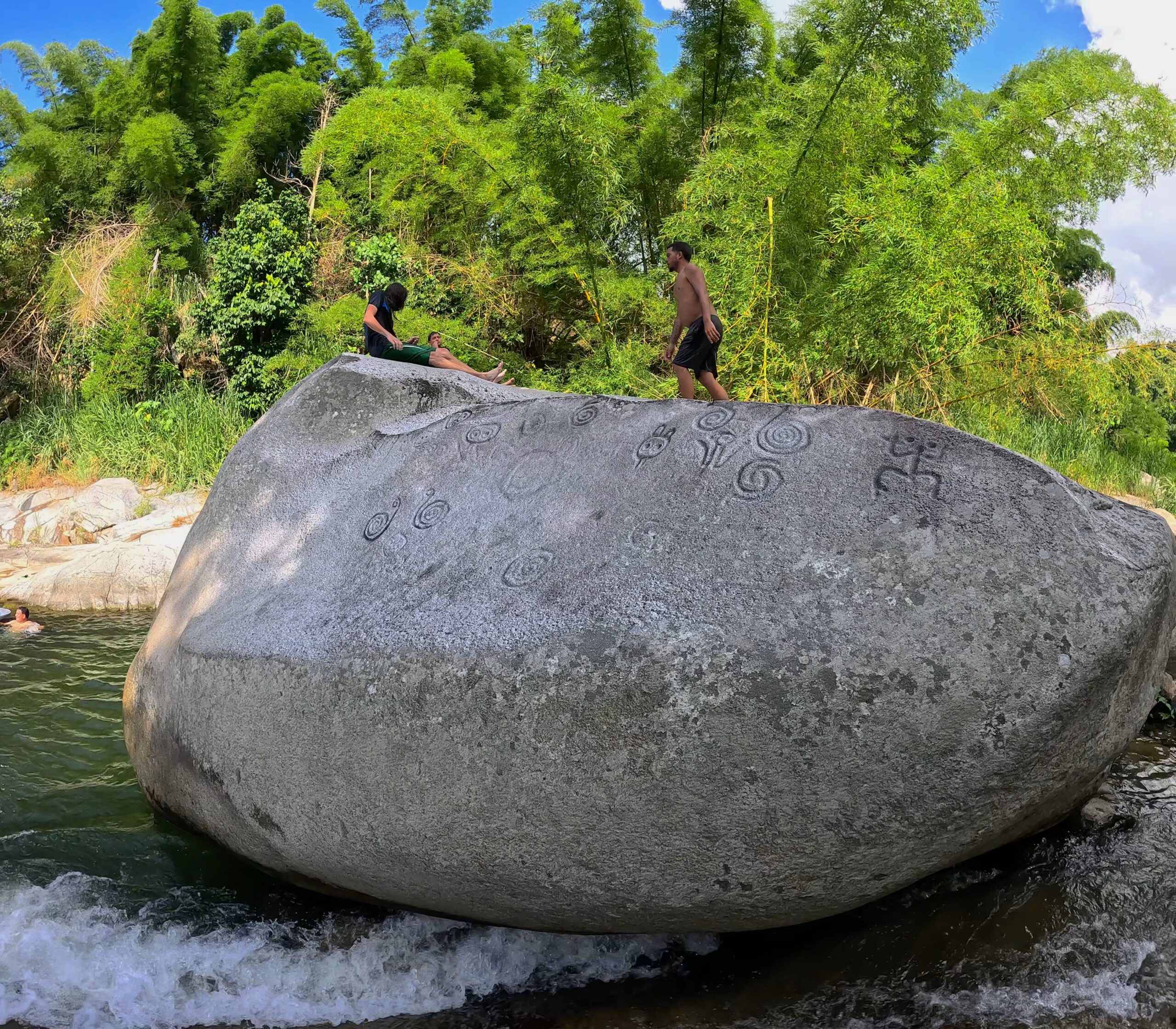
Drive 37 minutes to La Piedra Escrita. A large boulder sits beached in the middle of the Caonillas River. Park in a large lot in front of the La Escrita restaurant for free. Walk away from the road to find a long wooden boardwalk suffering from the elements and termites. Walking down its switchbacks will take you to the river, right in front of the boulder. The rock is covered in Taíno petroglyphs. You can jump off, or slide down the boulder into the river. I was surprised to see a large group of local boys sliding down the rock, right over the petroglyphs when I arrived, but I guess that too is part of this location’s history. The river is warm and the surrounding mountains add to the wonder of this very special spot.
Las Delicias Waterfall
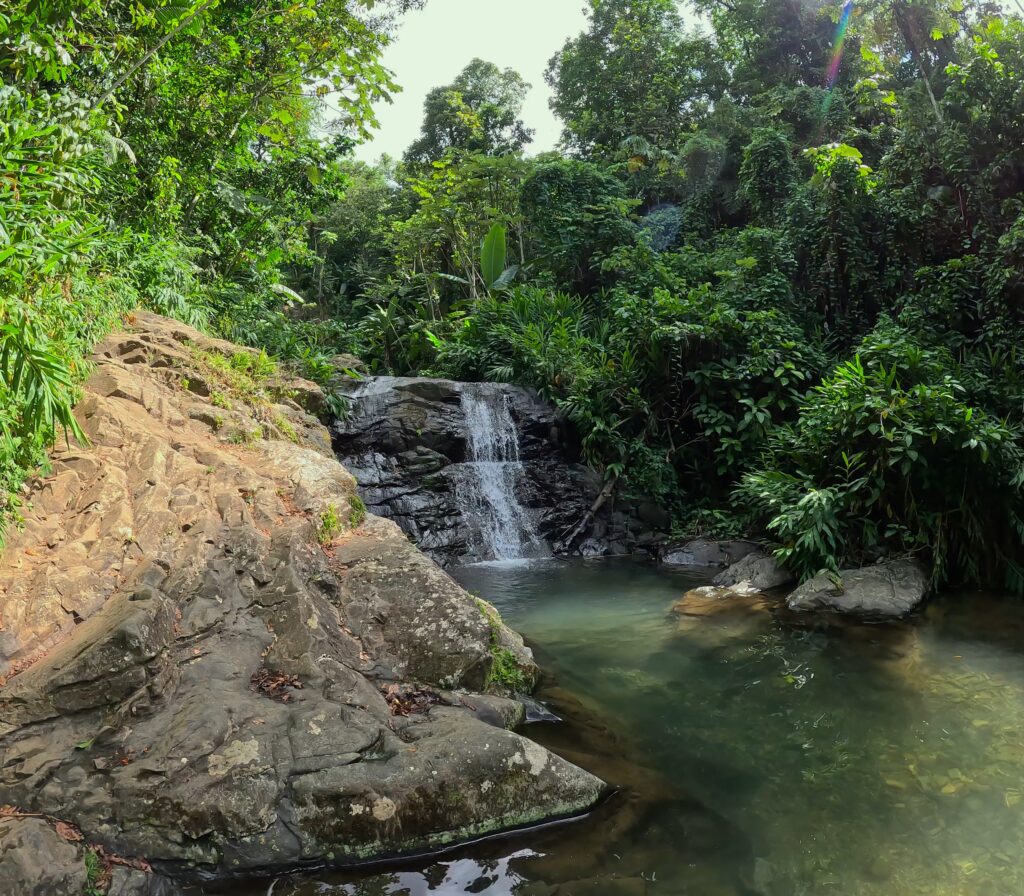
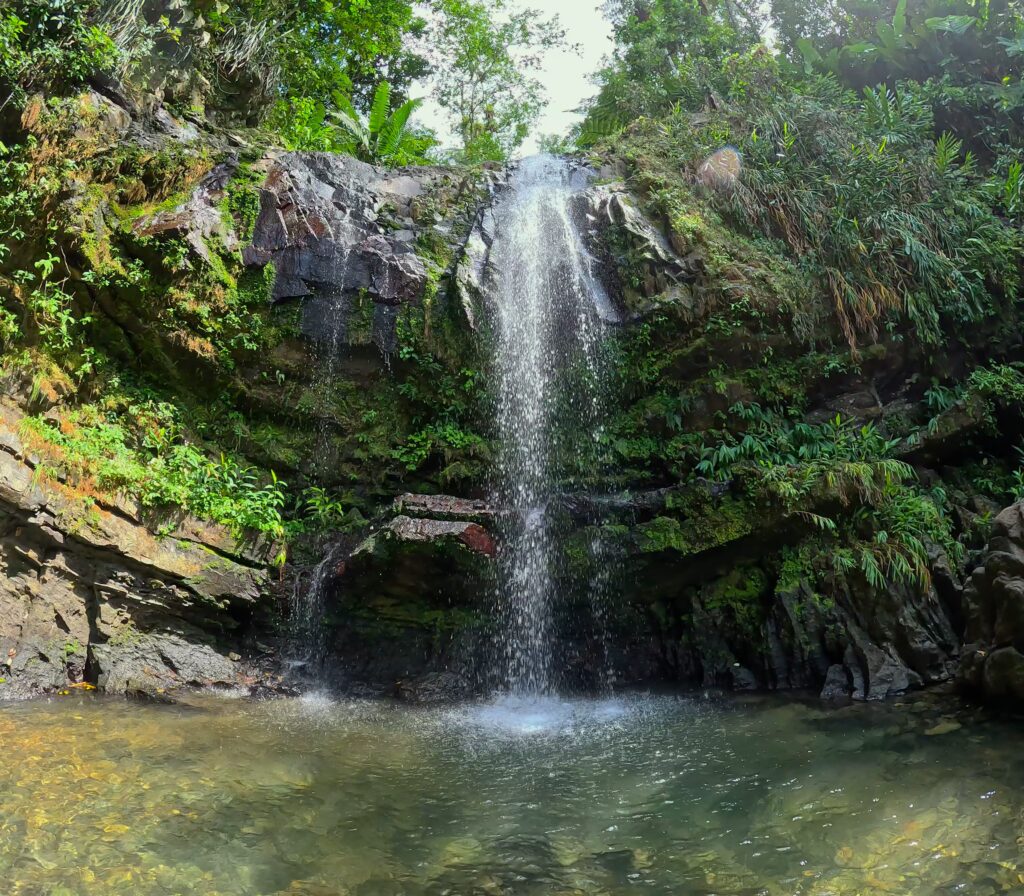
Next, drive 23 minutes to Cascada Las Delicias. Sporting two waterfalls near the main road, this spot looks like a screen saver. The water is cool but not cold and the forest is thick and alive around the river. The walk to the further and larger waterfall probably takes around 60 seconds but the rocks do get slippery when wet. I’m told there is a trail to the left of the 2nd waterfall that continues on to another waterfall – Cascada La Escalera that is very much worth the easy hike.
La Chorra de Doña Juana

Next drive 20 min to Cascada Chorro de Doña Juana – a beautiful waterfall that cascades into a circular pool of cool water. It’s comprised of several tiers and is one of the most striking on the island. It’s located in the Toro Negro State Forest and is right off the side of the road, you can’t miss it. Park on the road near a restaurant and gift shop. Sit on the bridge, or scramble down the rocks to the pool at the foot of the waterfall to enjoy this picturesque spot. The water is cold, but we had fun swimming and lounging on the rocks. The beef empanada ($2.50) from the restaurant is highly recommended.
Back track on a 1 hr 15 min drive to the town of Utuado for dinner. I recommend the beautiful Pueblo Viejo 419 Gastrobar. I love the vision of whoever constructed this restaurant. An old brick building’s walls were partially preserved to create the courtyard in front of the restaurant. Their food is great and includes some Peruvian dishes. The risotto comes highly recommended.
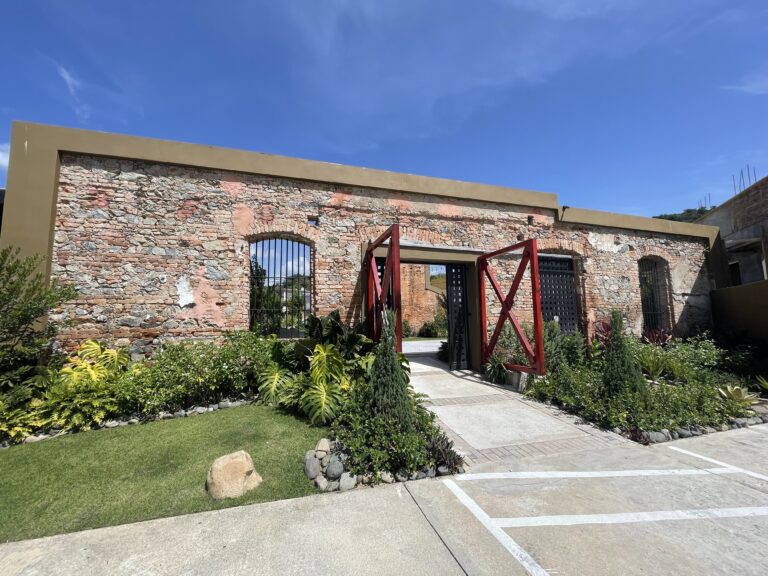
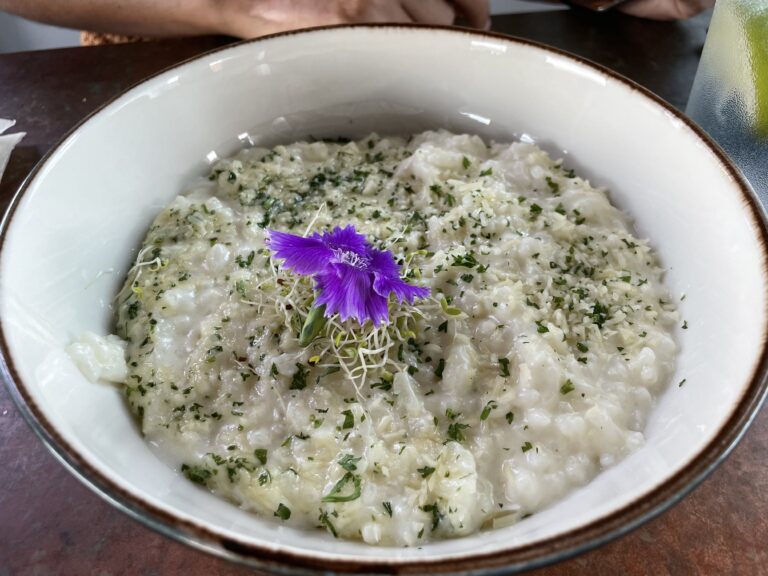
If you are traveling without kids, consider staying in the Casa Grande Mountain Retreat. They only allow adults. It’s a beautiful property built on a hill next to where Caonillas river runs into Caonillas lake.
Day 6
Today you’ll be beach hopping along the west coast of the island. The west is known for having the best beaches in Puerto Rico. For a complete guide to beach hopping along the coast, check out this itinerary.
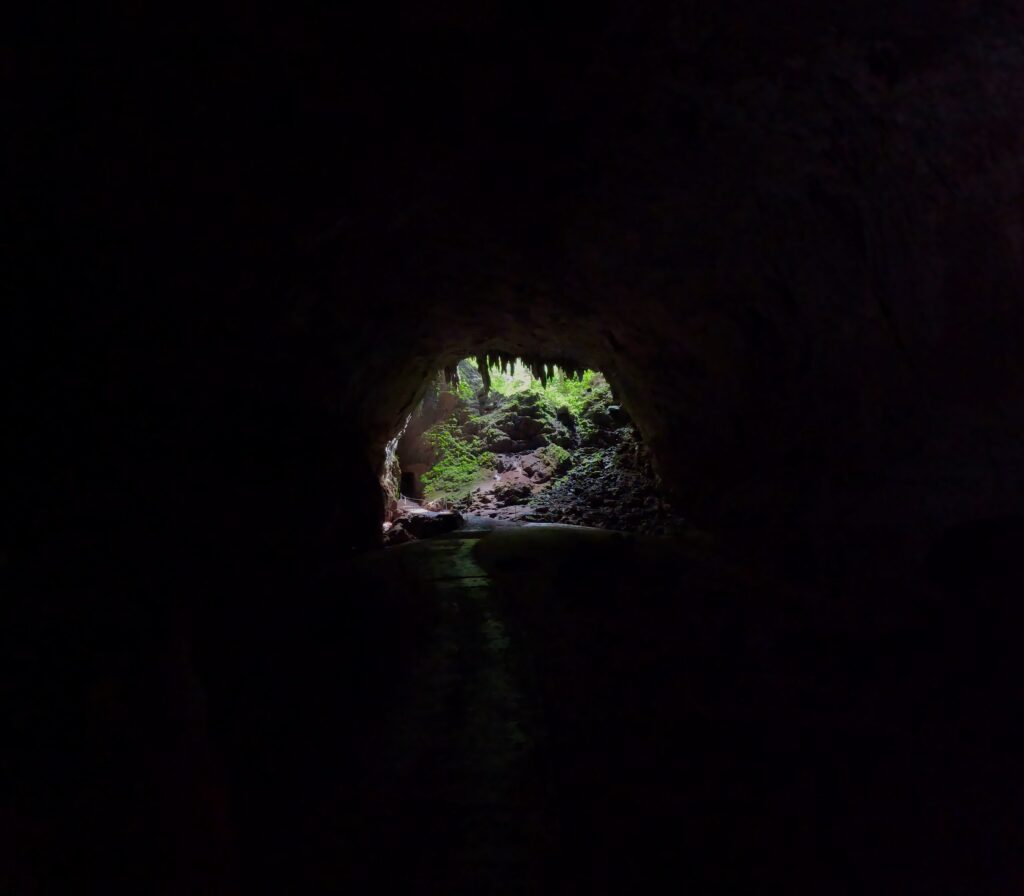
Get an early start to the morning by driving 1 hr 15min to arrive at the Camuy caves when they open at 8:00am so you can be in the first tour group. It’s one of the largest cave systems in the world. The park features over 10 miles of caverns, including a large chamber called the Cathedral, which is over 200 feet high and 600 feet wide. A guided tour is the only option, it includes a video introducing the caves ecology and history and a headset that plays information on the different areas as you walk through the caverns. The tour lasts about 1 hr 30 min.
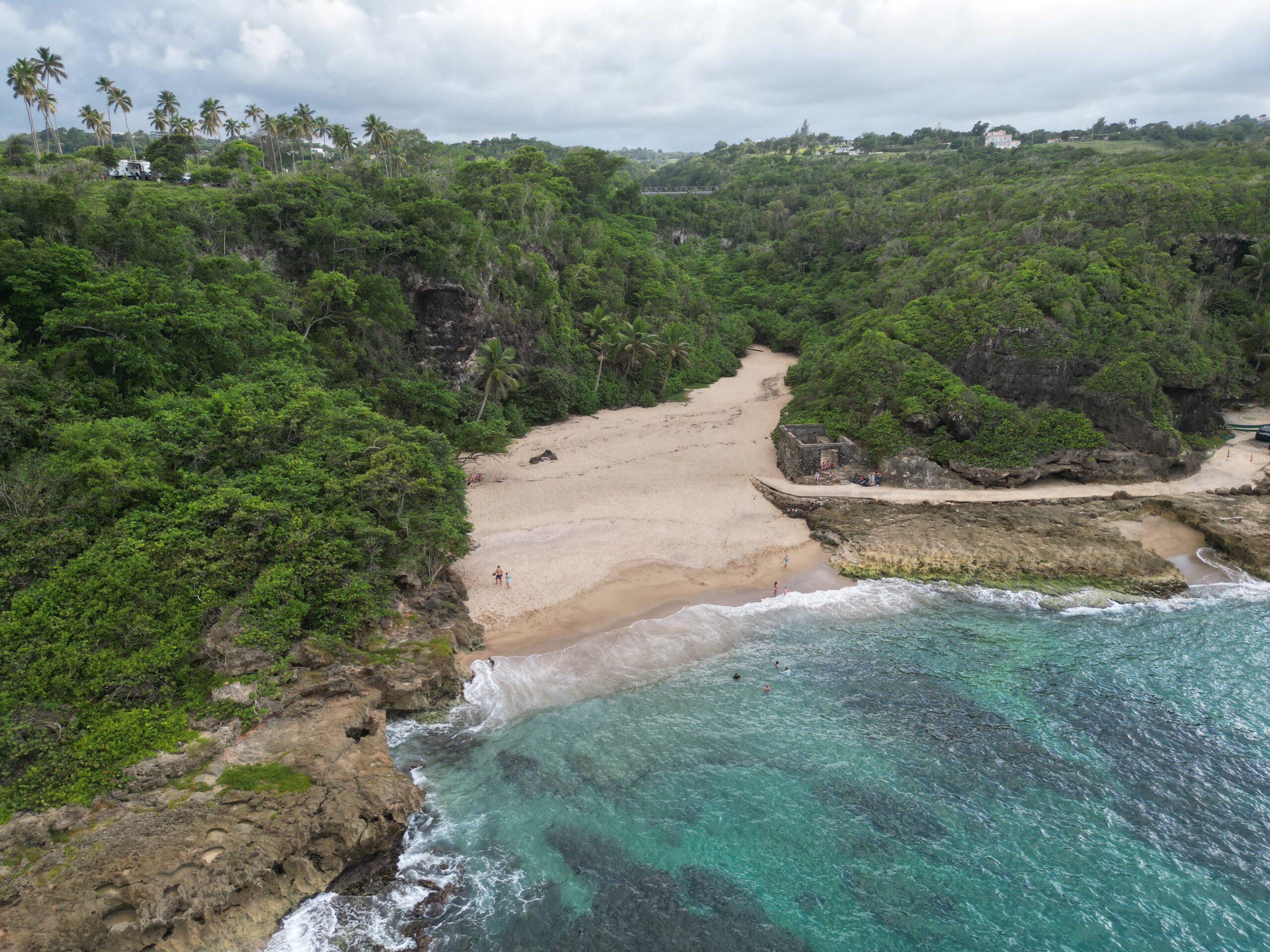
After hiking through the caves, drive 35min to Quebradillas to a fun little beach called Puerto Hermina. As you drive down a steep road you’ll have an awesome view of the Atlantic Ocean. Parallel to the rocky coast line are coconut palms and a few pavilions with picnic tables under them. The beach is at the end of the road located next to the ruins of some structure. The beach is small and interestingly the sand runs far inland, away from the ocean in a vaguely triangle shape. If you follow it back into the forest you can do a hike to a bridge with a great view of the surrounding forest and cliffs. For those interested, there is rock climbing on the sheer cliffs near the parking lot.
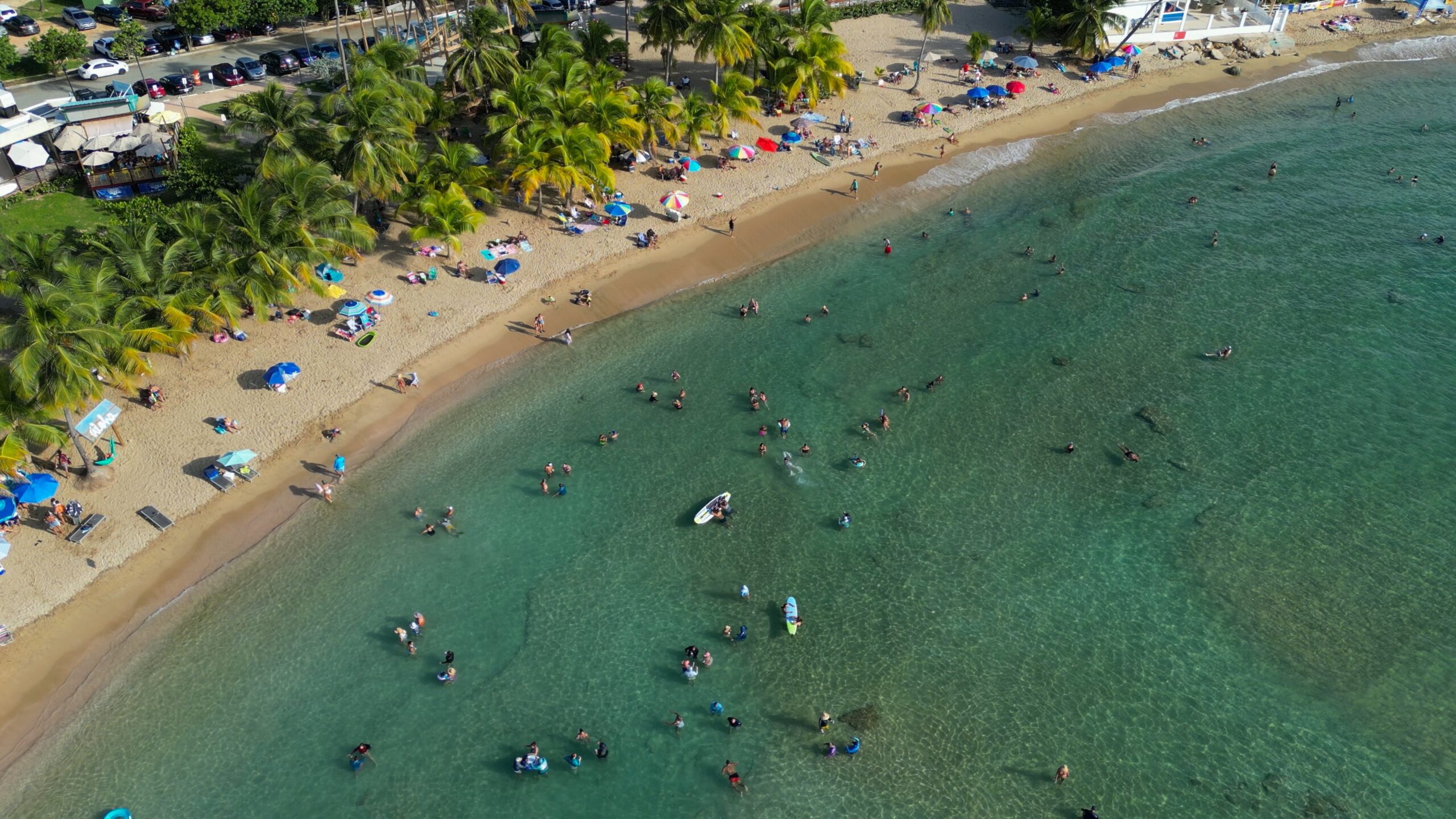
Drive another 30min to Jobos Beach in Isabela. Grab something to eat at one of the many restaurants around the beach. I have tried a few and they’re fairly similar in my opinion. This beach has something for everyone. It has surfing for all skill levels, near the rocky area you can do some snorkeling. Close to shore the water is calm and the bottom is sandy so you can relax in the shallows. On the shore there are many palm trees where you can set up your spot in the shade. Parking on the road can be tough if you come late to this popular spot. You can easily spend the whole day on this beach. The current can be strong here, do not attempt swimming past the sand bar if you are not a strong swimmer.
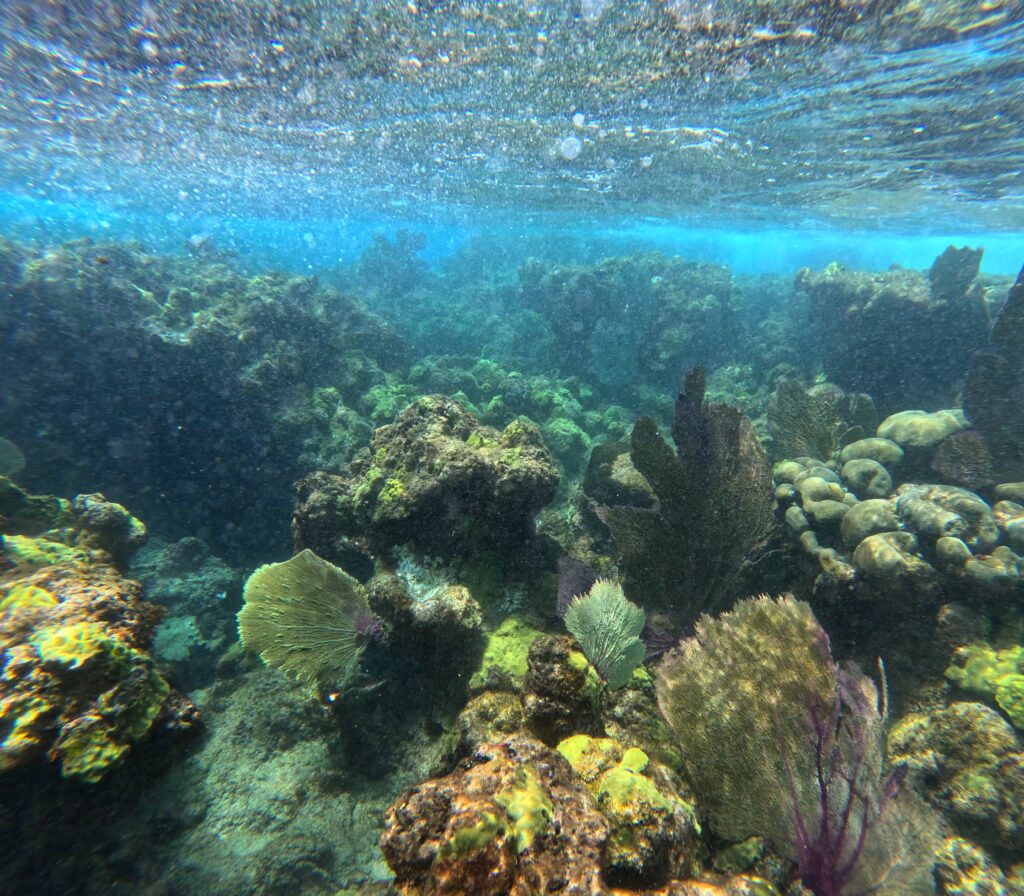
Just down the road is Shacks Beach. The beach itself is windy and rocky, but Shacks Beach has some of the best snorkeling on the main island. There is a good amount of living coral, a diversity of fish, and these really cool caves you can swim around, into, and even through. I once dove into a cave and looked up to see a massive barracuda staring at me. This is a location for confident swimmers, exercise caution when swimming in the caves and be aware of the current and the reef. The reef gets extremely shallow and the current can be strong. There are a lot of sea urchins in rock crevices, even in the shallows. Snorkel with a buddy, take it slow, exercise caution, you’ll have a blast.
From Shacks Beach, drive 6 min to this traditional Puerto Rican restaurant. Desecheo offers high-quality Puerto Rican cuisine. Unfortunately, it comes at a steep price – main dishes average at about $24. I got one of the cheaper options and felt it was still $5 overpriced. For that reason, I have not gone back though the food was decent. There are places with equally good food for much less. That being said, it is a safe and good option in the area.
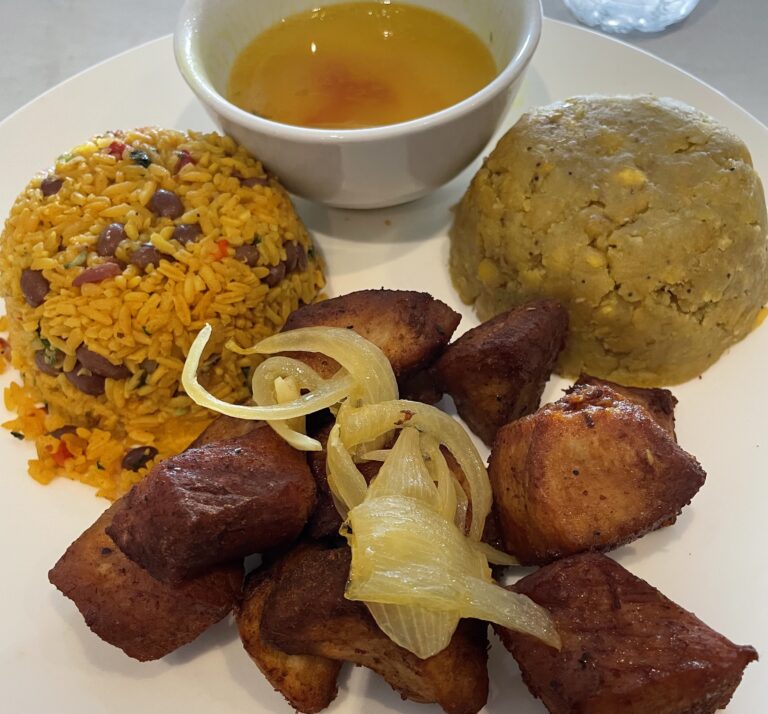
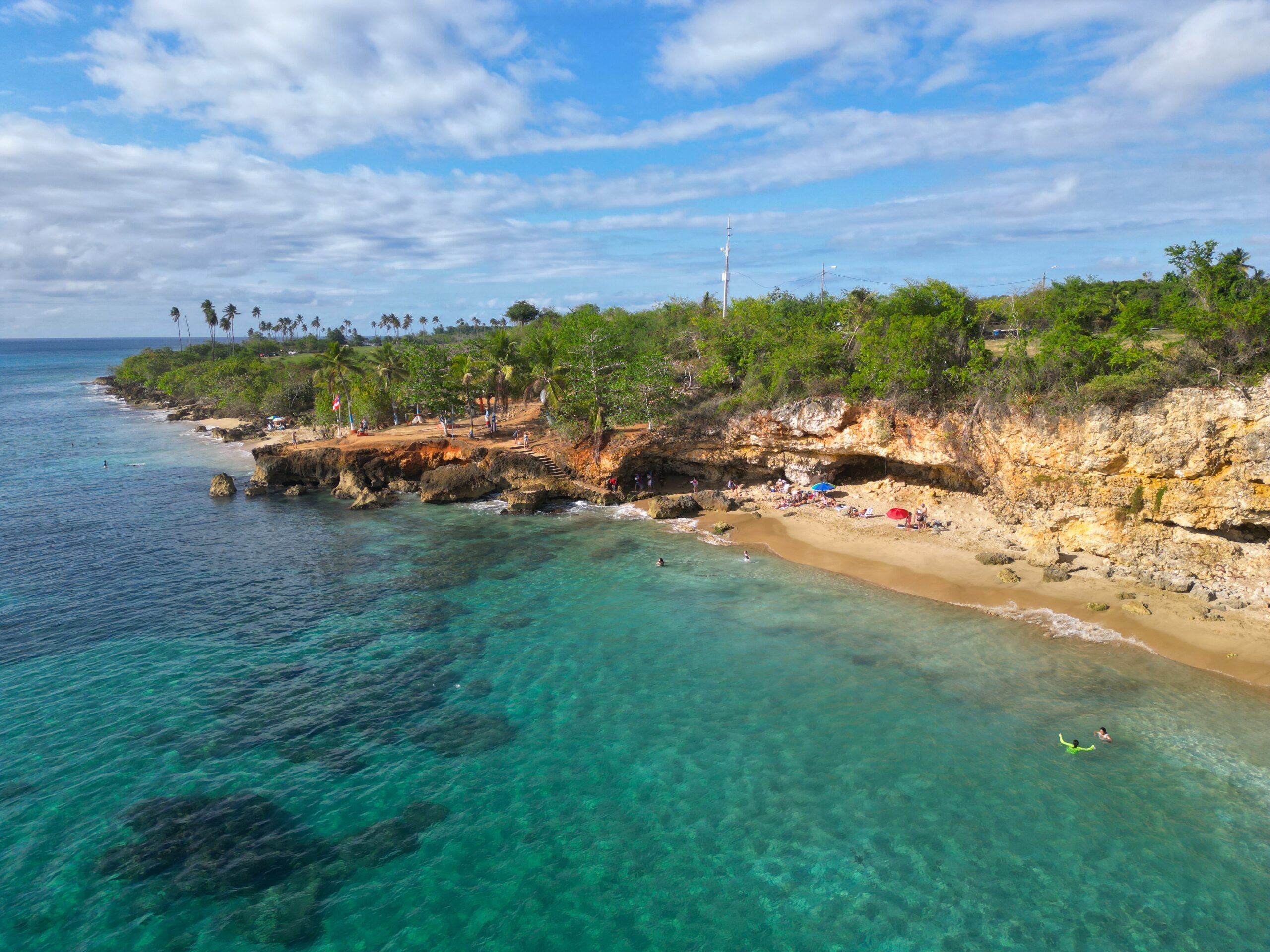
From Shacks Beach, drive 20min to Peña Blanca. It’s a great beach for snorkeling, laying in the sand, or even whale watching! There is decent snorkeling here close to shore. I have seen fish, eels, and turtles. Whales pass between the shore and the distant Desecheo Island February – March. The water is almost as clear as the nearby Crash Boat Beach. We got a $100 ticket for parking close to the beach. It turns out that a man owns a dirt lot near the beach and charges everyone $10.00 to park on his dirt, if you park at the beach entrance (where there are no “no parking” signs), he calls the cops who promptly come to hand out tickets. High tide eats up much of the beach and makes it tough or impossible to get down to the water so check the tide.
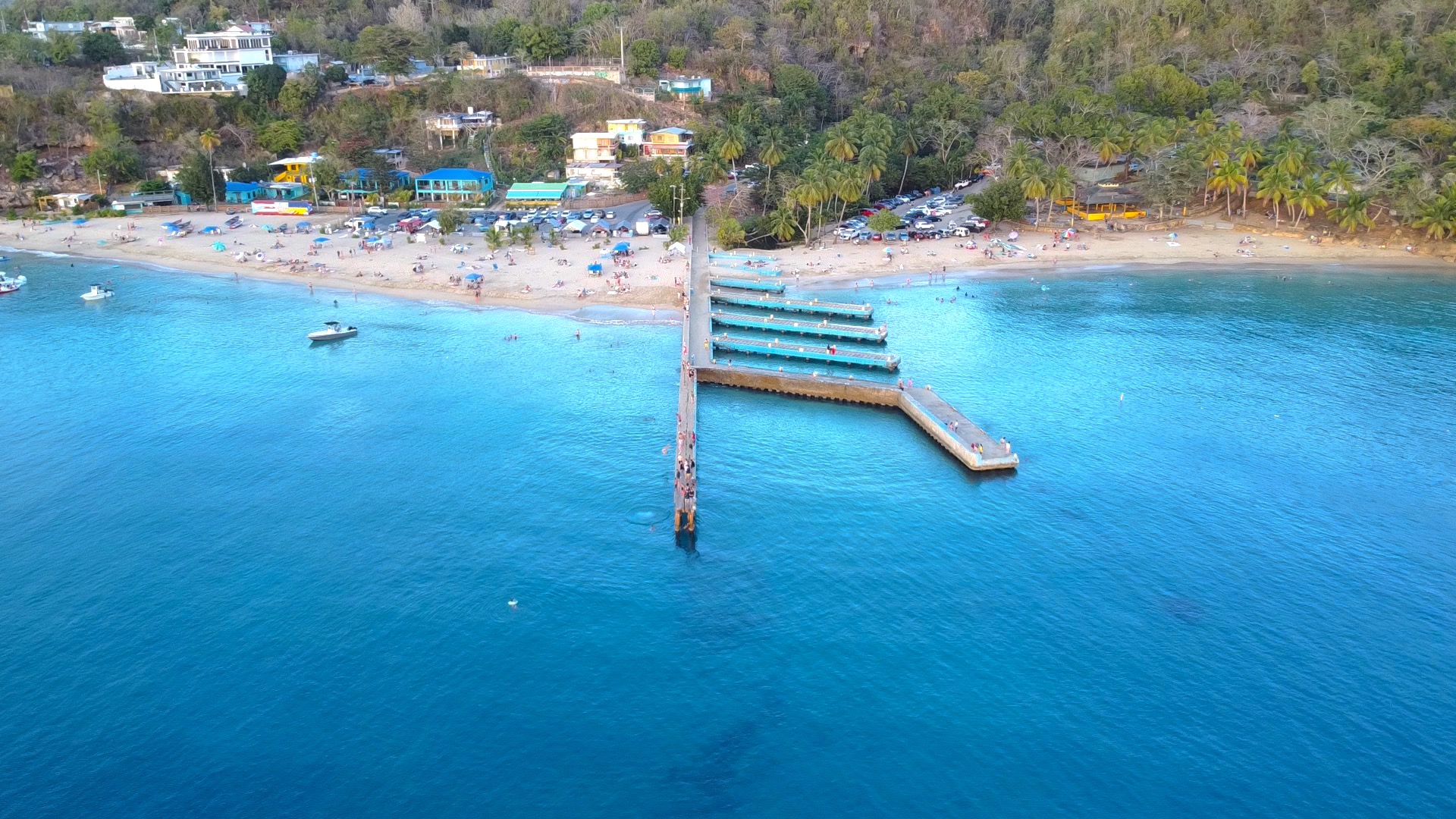
A short drive from Peña Blanca is Crash Boat Beach. This is easily one of the most popular beaches on the island, it’s always packed and loud. Parking is usually a headache. Everyone has congregated at this west coast beach in Aguadilla for a reason. The water visibility here is perhaps the best on the main island. You can snorkel around the tip of the pier and see marine life like fish, sea snakes, and squid. This is a popular scuba shore dive location for these reasons. You can walk to the end of the pier and jump off in either direction, then climb up a rope attached to the end of the pier to do it again. It’s a location with a lot of energy and it’s always fun. If there’s one beach you don’t want to miss today, it’s this one.
After a long beach day, drive 15 min from Crash Boat to this ramen restaurant. I have heard the claim that this is the best ramen in the island. I have only tried two ramen spots, but of the two it is the best. I highly recommend the double pork ramen, it was our favorite thing there. If it is closed, Khalan Thai is an excellent option. the only down side is that the food can take a while to come out.
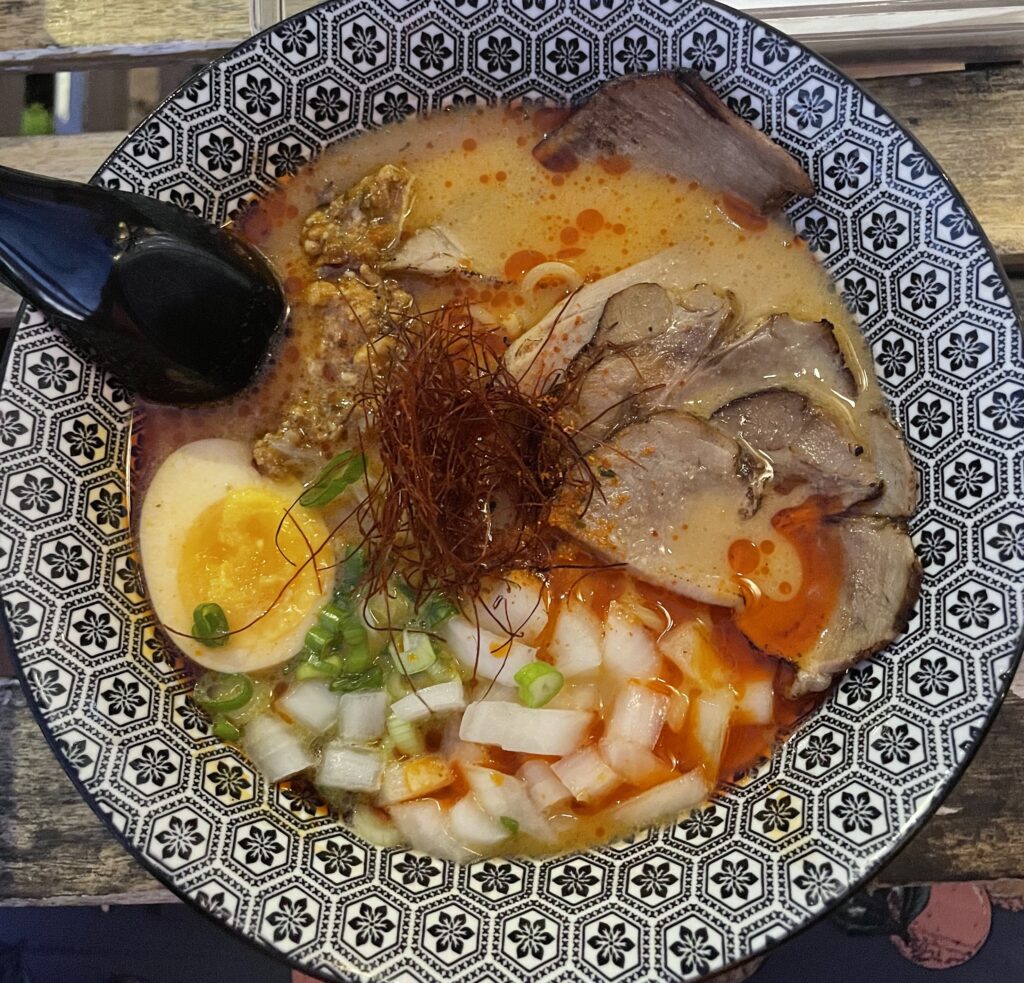
Stay the night in Aguadilla. I recommend Hotel El Faro as a good, cheap option. It’s very close to Crash Boat Beach, the AC works well, and I found it to be a nice place for the price.
Day 7
Today you’ll be visiting the city that has the best surfing and snorkeling on the island. If neither surfing nor snorkeling interest you, consider heading to the south west corner of the island to visit the beaches there instead. Rincón is a surf town with a very different vibe from anywhere else you’ll find on the island. For a more in-depth guide, check out my Rincón Itinerary. Grab breakfast at a bakery and drive 30 min to Rincón.
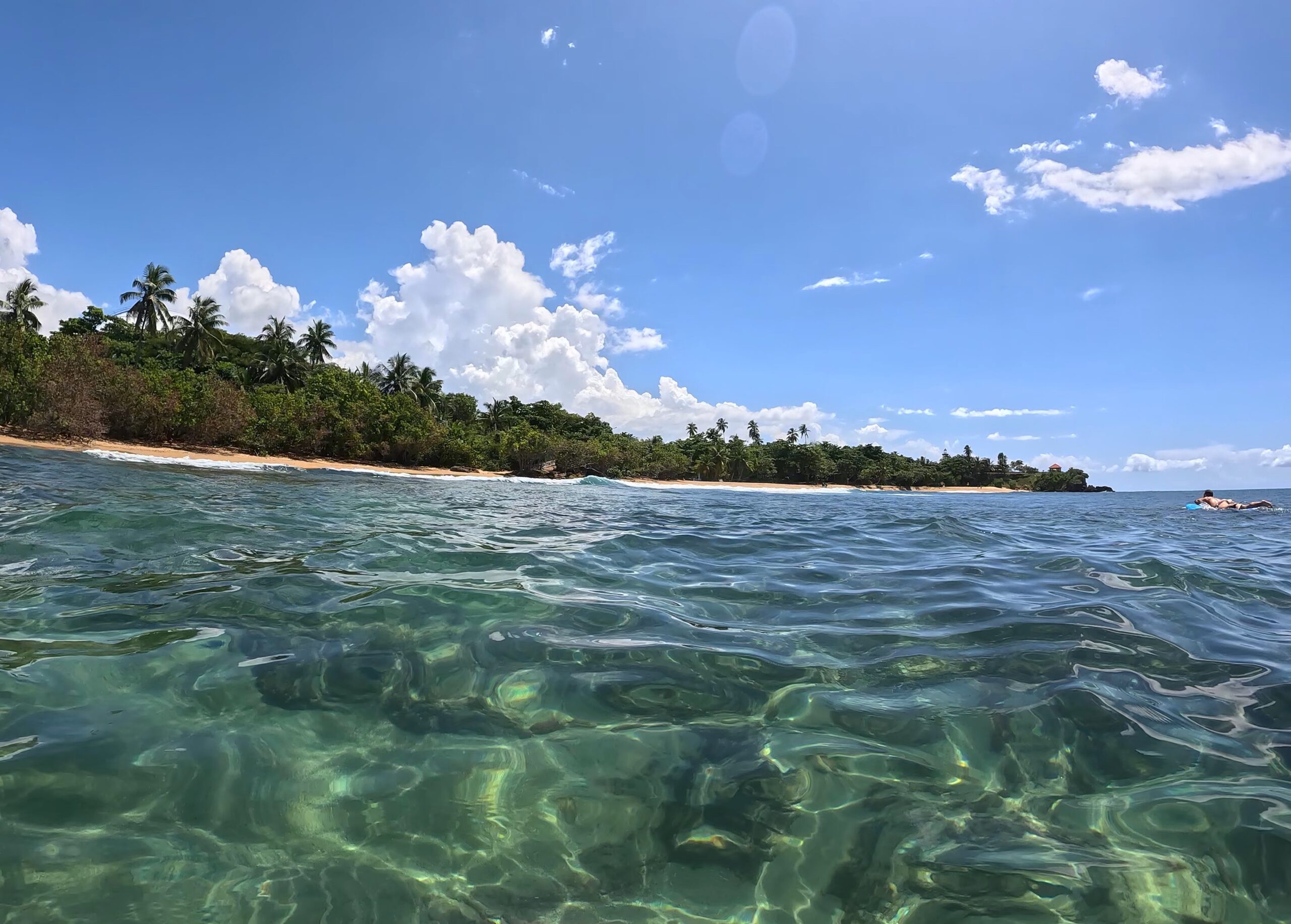
Domes Beach should be your first stop if you have any interest in surfing. It’s considered one of the best surf spot on the island. From my experience, it’s the best. I had the best surf day of my life here. The waves are clean and consistent, the water is clear, the ride time for each wave is long. It can get get crowded, but you can catch it on a day with very few people. If this were not one of the furthest beaches from my house, I would be here all the time. If you are not surfing, check out Sandy Beach instead.
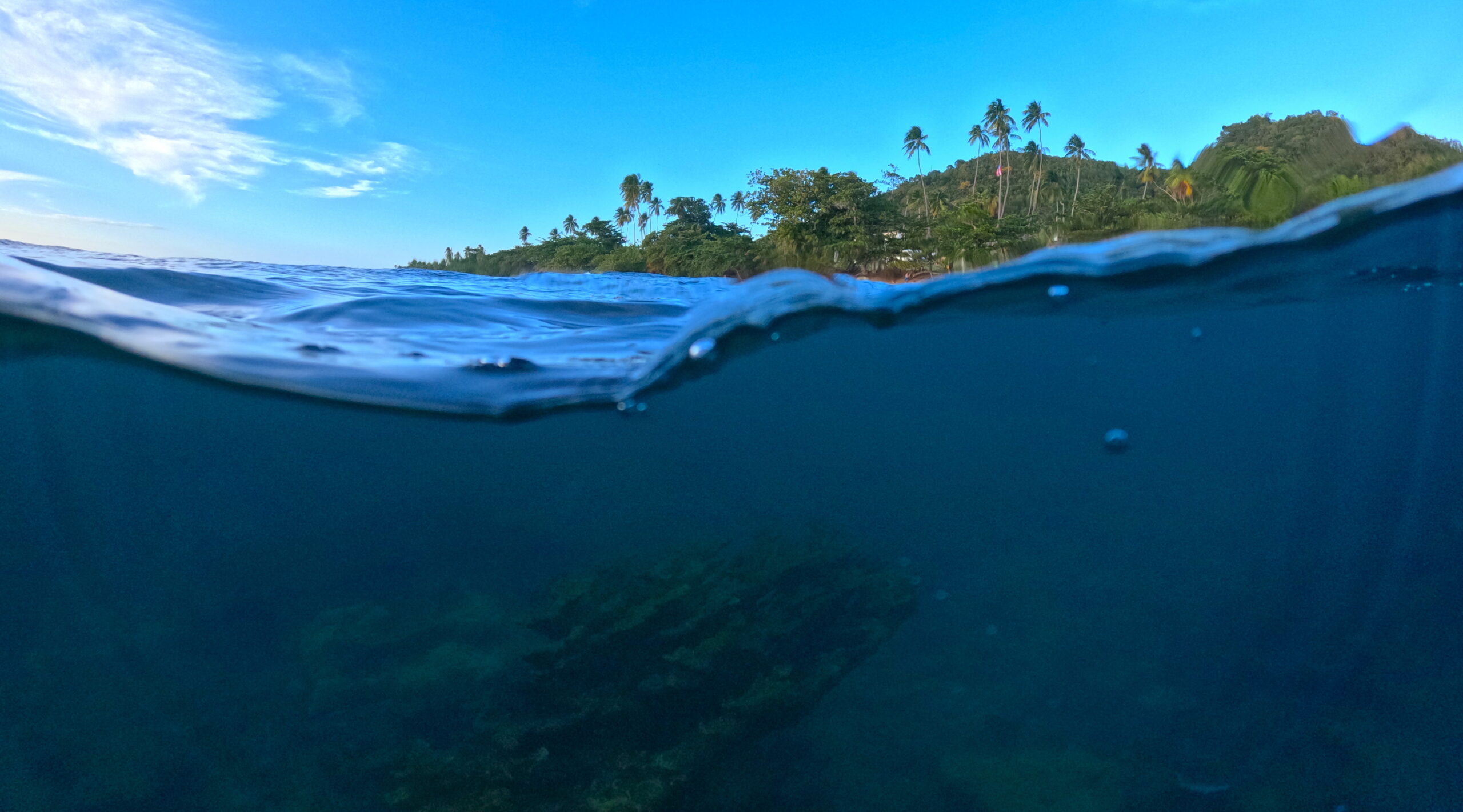
Drive 4 min down the road. You’ll turn down an unassuming farm road where you’ll find a beach with one of the healthiest coral reefs on the island. There isn’t a lot of diversity in coral species, what makes Steps Beach special is the sheer quantity of living elkhorn coral. Small tropical fish swim through the antler-like limbs they call home. It is important to go when the surf is calm because the swell clouds the water and can drag you around, risking a collision with the coral. The shore is rocky, look for an easier entrance into the water on the left.
Make a short drive to the town to check out Rincón’s main plaza. On Saturday mornings you’ll find a small farmers market and Thursday evenings an artisan market.
Walk to my favorite bookstore on the island: El Coquí Bookstore. On my first visit I picked up a battered but gorgeous 1956 edition of Jules Verne’s 20,000 Leagues Under The Sea.
Further down the street is the Rincón Bakery. If you like cream cheese try the local pastry – “quesito” from this bakery. It’s the best quesito I’ve tried so far.
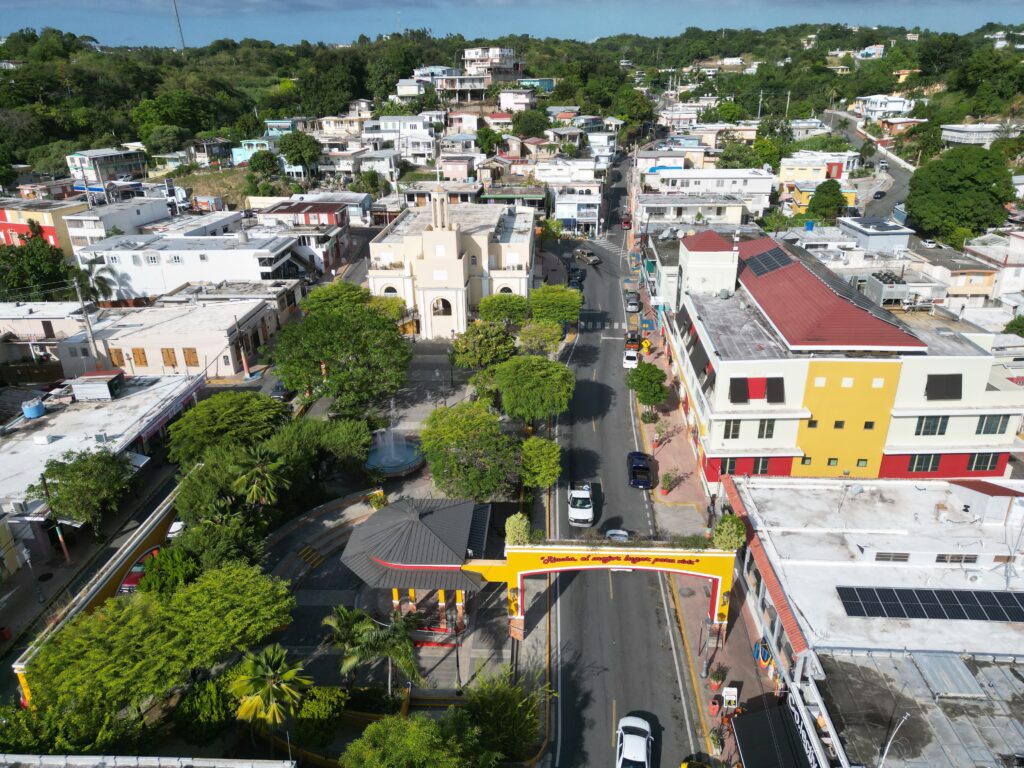
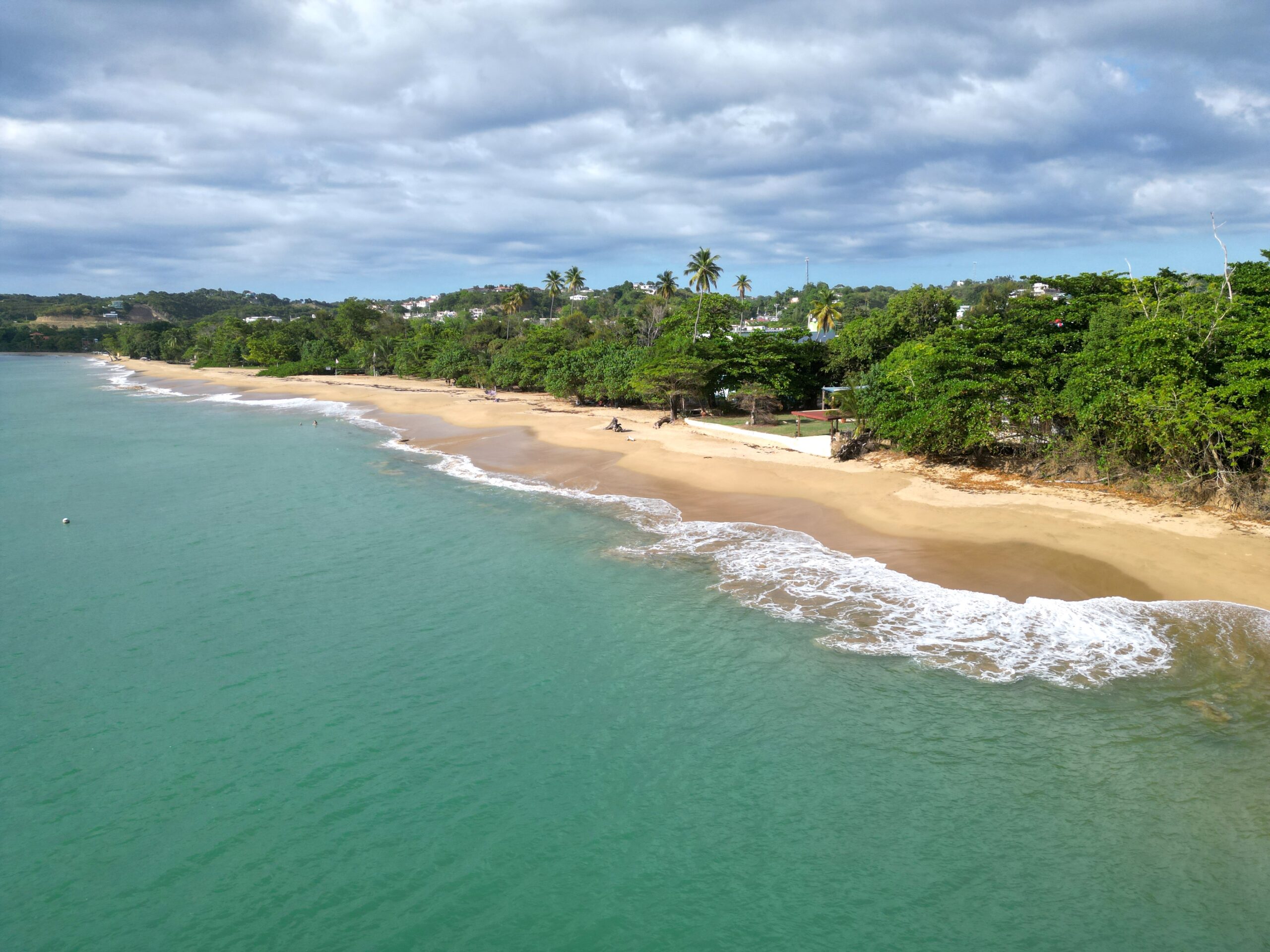
If you want to lounge in warm, shallow water, check out this beach. It’s a sandy beach a short walk away from Rincón’s main plaza. There is shade back in the trees, further from the water, but beware of sand flies. Small waves break on the sand. There is a beach volleyball net set up near the tree line. If you are looking for a beach in Rincón to lounge in the water, this is it.
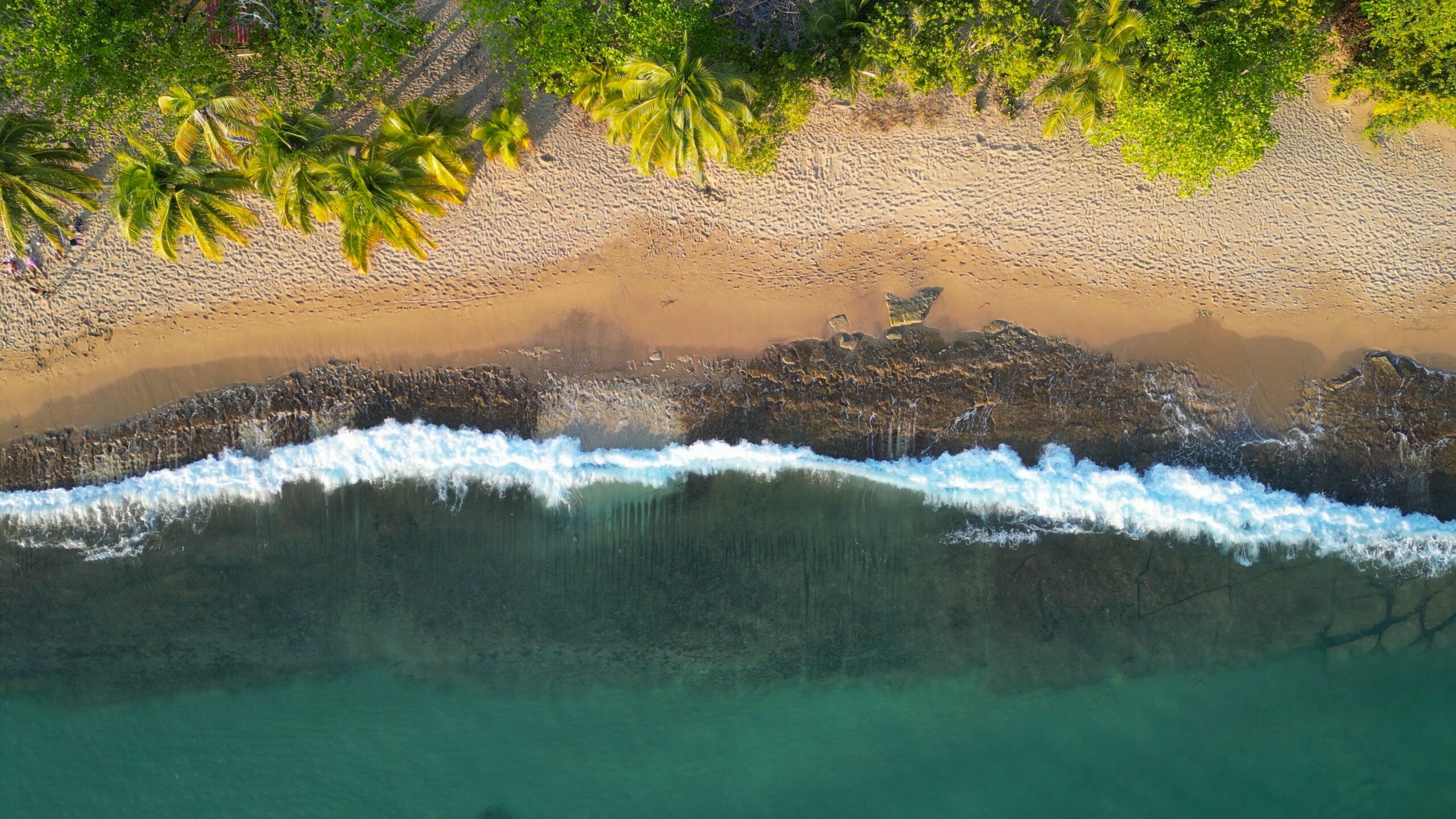
Nearby is a beach I often find myself visiting for sunset on the west side of the island. The water is calm and the bottom is sandy once you get past the rocky section that rings the shoreline. There is a bathroom at the bar right next to the beach and a lot of parking here as this is a boat launch. They say the best sunsets on the island go down in Rincón so no matter where you find yourself, make sure you don’t miss it!
It’s a two hour drive back to San Juan, you’ll be arriving around 8:00pm. If you decide to eat in San Juan, there are plenty of great places to eat in the city. One good option is Lote 23. It’s a food park sandwiched between big buildings. There are four or five good places to choose from. I usually go with the poke bowl.
In one week you will have seen a lot of Puerto Rico and gotten a good feel for other things you wan’t to do on your next visit. And yes, there is still more to do! I have lived in Puerto Rico for two years and find new things all the time. Check out Regions to see the best things to do by location. Notably, this itinerary did not venture into the Southern Region at all. It’s still worth checking out!
